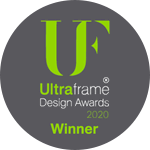The ultimate home improvement glossary
We try to keep things simple and not fill your head with too much jargon, but like any industry we have more than a few technical terms.
It can help to be familiar with one or two especially when comparing products.
And let’s face it, who doesn’t want to know what a sash horn is?
Windows
Bay window
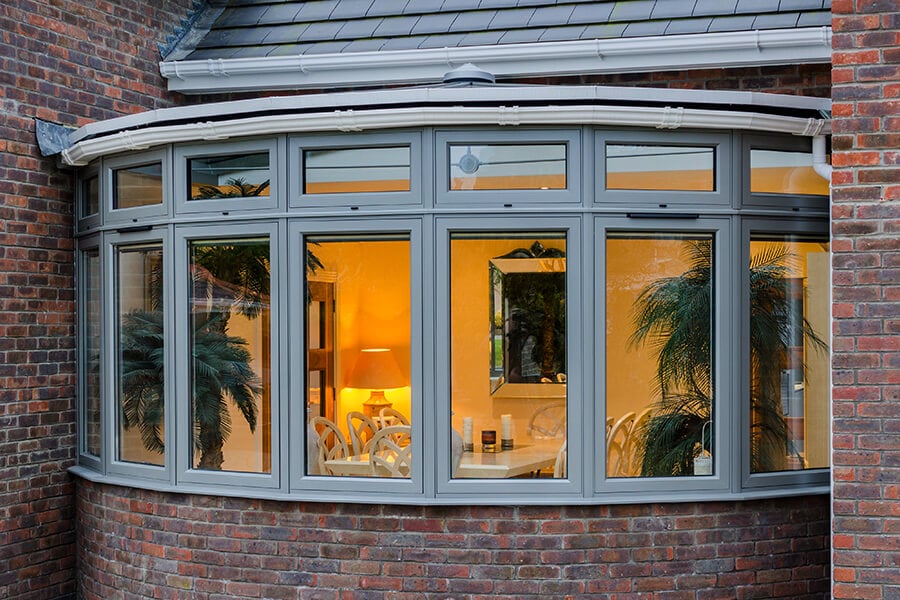
Bay windows provide additional space, increase natural light, and improve the style of the room as well as the outward appearance of the house. They protrude outwards from the main structure, creating a nook or alcove that can be used for seating, display, or enjoying wider views. Bay windows often serve as architectural features that add charm and character to a building.
Bespoke window
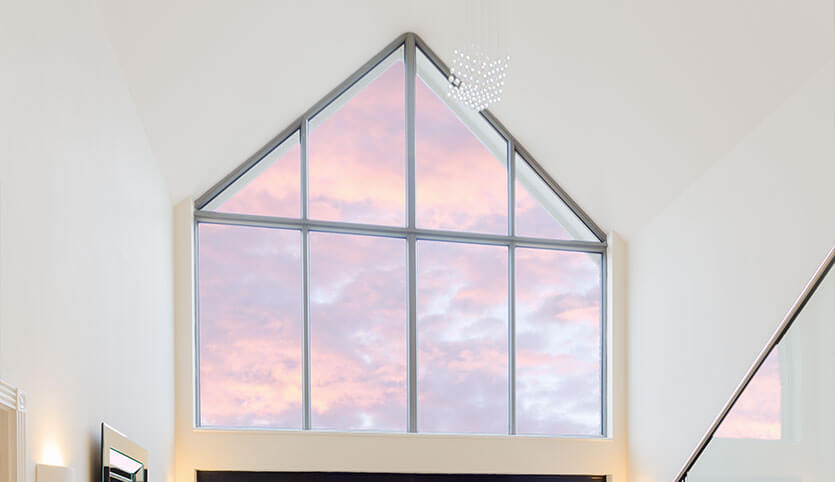
Windows that are made-to-order for a particular customer. Bespoke windows are generally not the conventional rectangular window shape.
Bottom hung / hopper window
The window opens from the bottom of the frame, e.g. a sliding sash window or a bathroom window.
Bottom rail
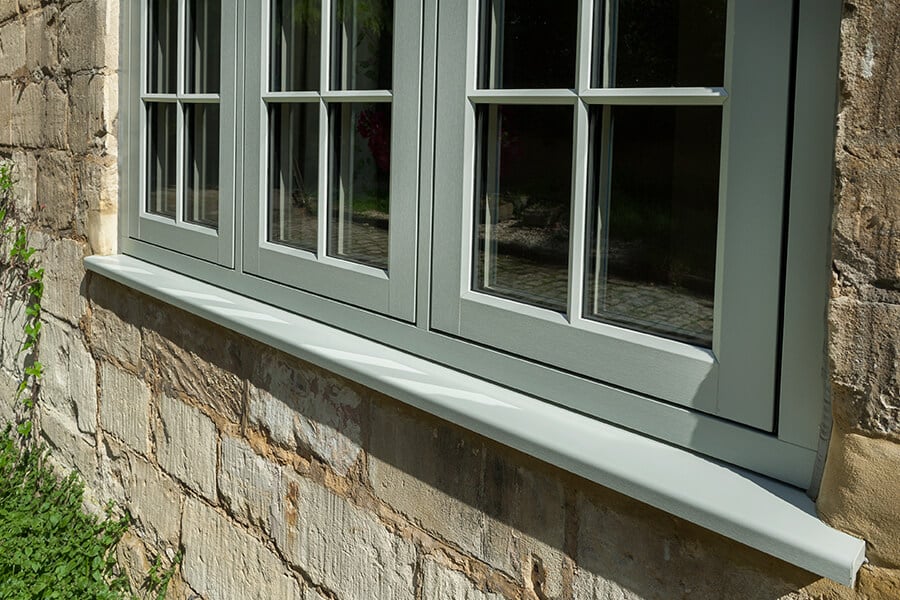
The horizontal bar across the bottom of the window frame, which sits above the cill.
Bow window
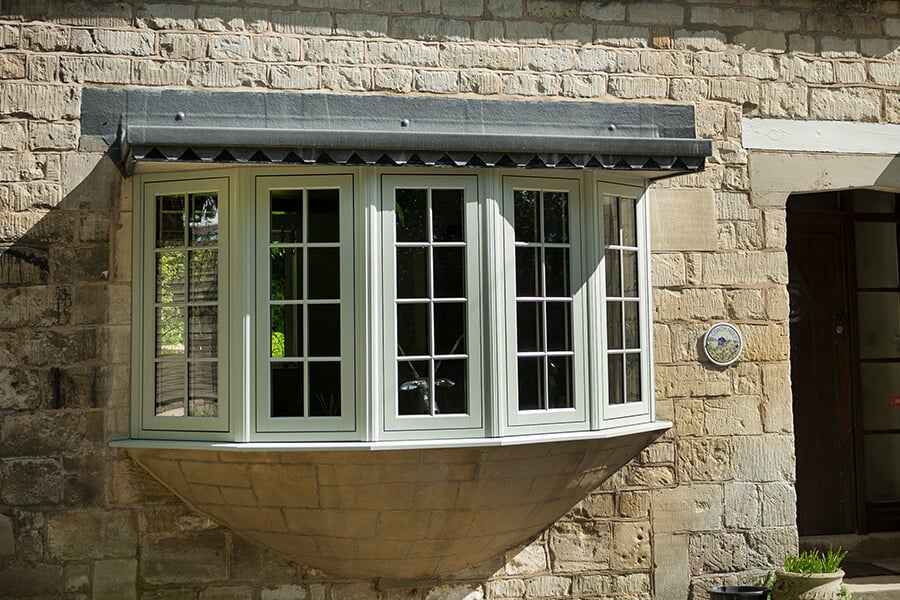
Bow windows are recognised by their curved shape and the way they extend outwards from a building. Typically, bow windows feature 4-5 windows that are fitted at an angle of around 10 degrees.
Casement window
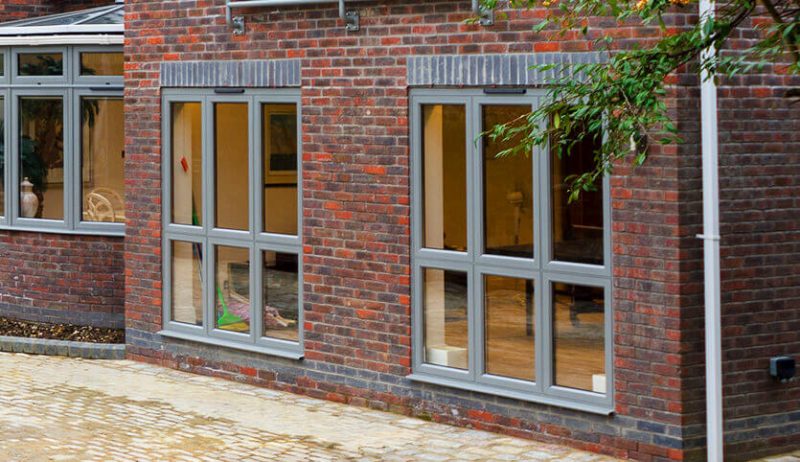
A window sash that generally opens outwards from the side of the frame, available in uPVC, timber and aluminium.
Centre hinge / pivot window
The window sash revolves on central hinge. Typically, fully reversible, centre hinged windows allow for a wider opening and easy cleaning.
Cill
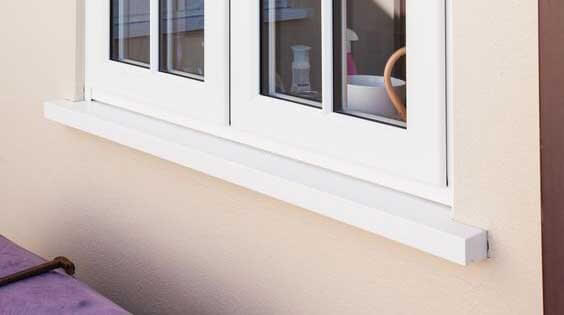
The lowest horizontal ledge or bar that forms the bottom of the window frame.
Double glazing
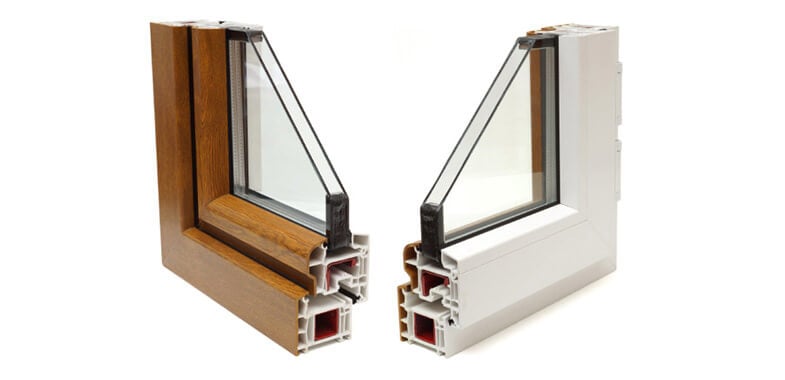
Designed to reduce heat loss, noise and UV rays, double glazing consists of two panes of glass with a gas-filled space in-between.
Double hung
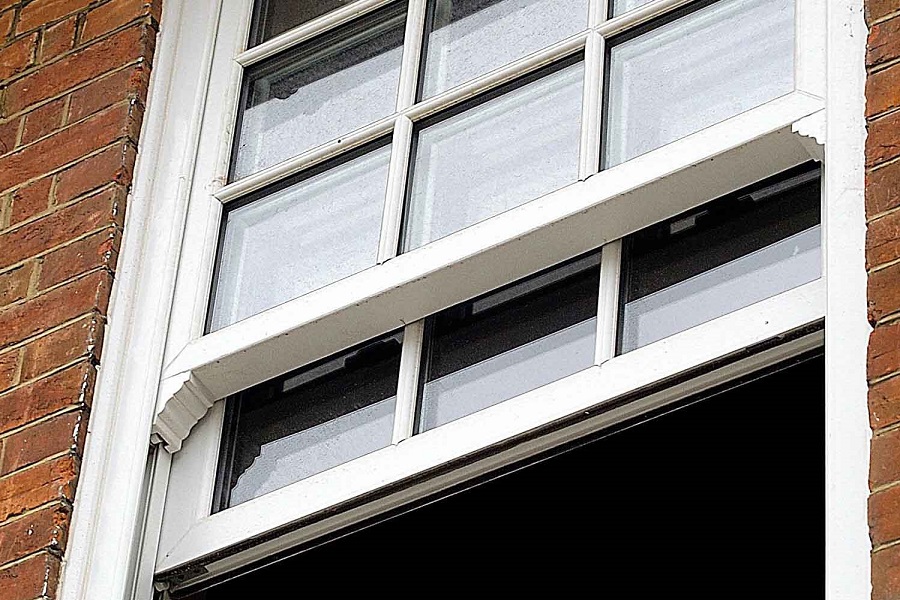
A double hung window has two moveable sashes, allowing both parts of the window to open and shut, e.g. a sliding sash window.
Fixed light window
A fixed light is a window that cannot be opened, generally used to enhance far reaching views and increase light and warmth.
Flush sash window
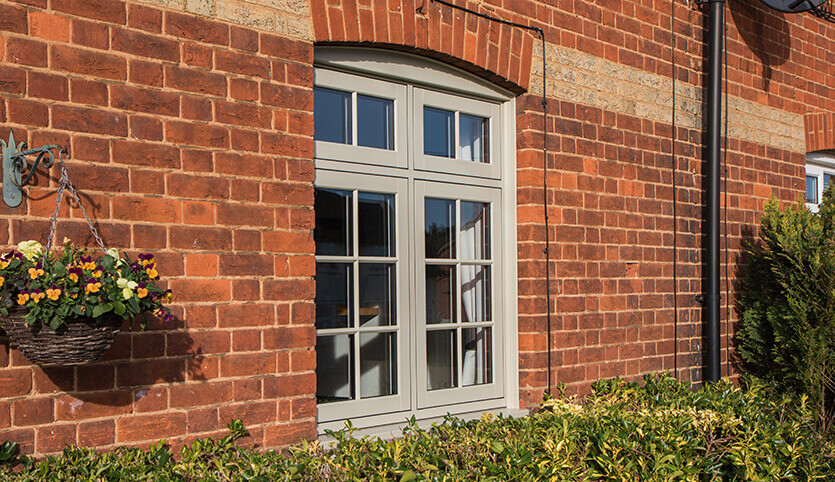
Flush sash windows fit neatly into the window frame instead of fitting proud. Made from uPVC, they offer improved energy performance over timber alternatives, better weatherproofing, and low maintenance and are also considerably cheaper. Well-known for traditional aesthetics without the drawbacks, even the keenest eye will struggle to tell the difference!
French window
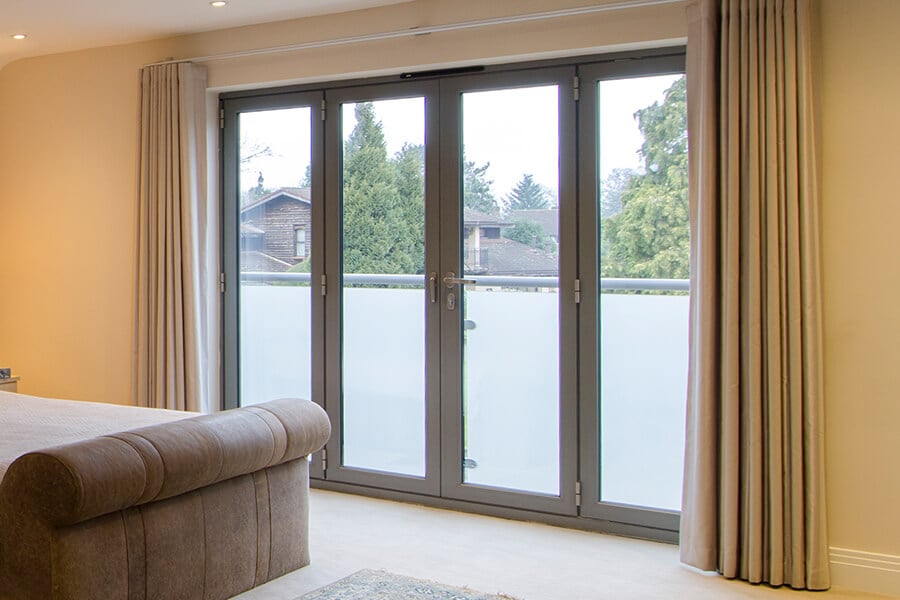
Also known as French doors, French windows feature a set of two glass panels that can be opened inward or outward.
Glazing bars
Glazing bars divide and hold individual panes of glass securely in place. Often designed into a grid pattern, they are typically used to create a heritage look.
G-value
G-value describes solar heat gain. It is a measure of how much heat from the sun passes through a window. A G-value of 1.0 represents full transmittance of all solar radiation. Most windows range between 0.2 and 0.7. Anything less than 0.5 is good.
Head jamb
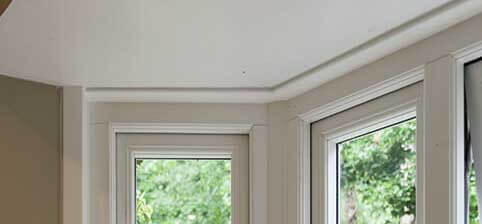
The first horizontal bar that forms the top of the window frame.
Heritage window
Heritage windows are suited to period and historic properties and are either made from natural timber or high-performance uPVC that replicates the authentic appearance of timber windows. Heritage windows are designed to meet conservation guidelines.
Leaded bars
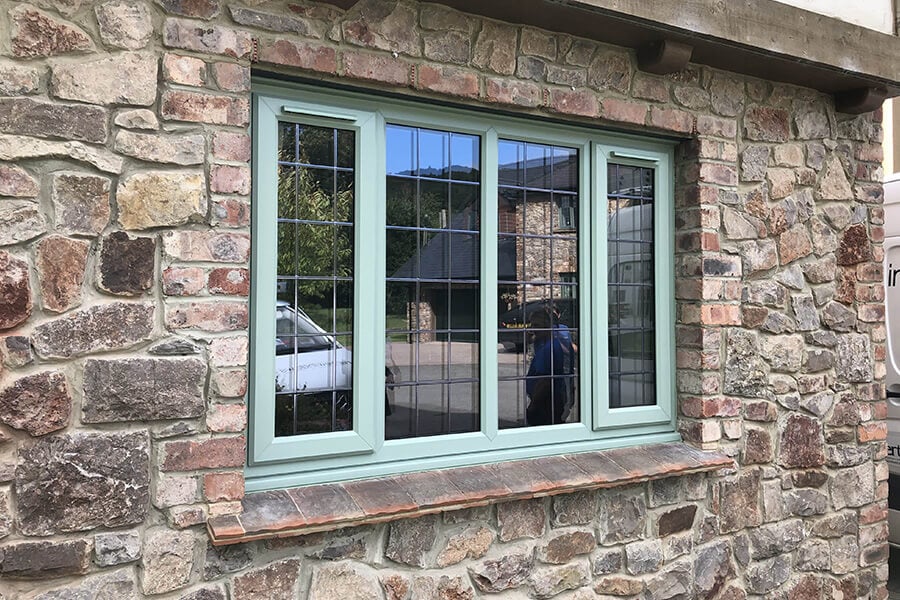
Leaded glazing bars are the thin strips of wood or metal that were originally used to separate and hold panes of glass in place. Today they provide a heritage-inspired, decorative effect – the most popular designs being diamond and square bars.
Oriel window
An oriel window is a form of bay window that's supported by an architectural block or bracket underneath. The difference is that an Oriel bay typically protrudes from upper floor windows, whereas bay windows are positioned on the first floor or the ground floor.
Sash
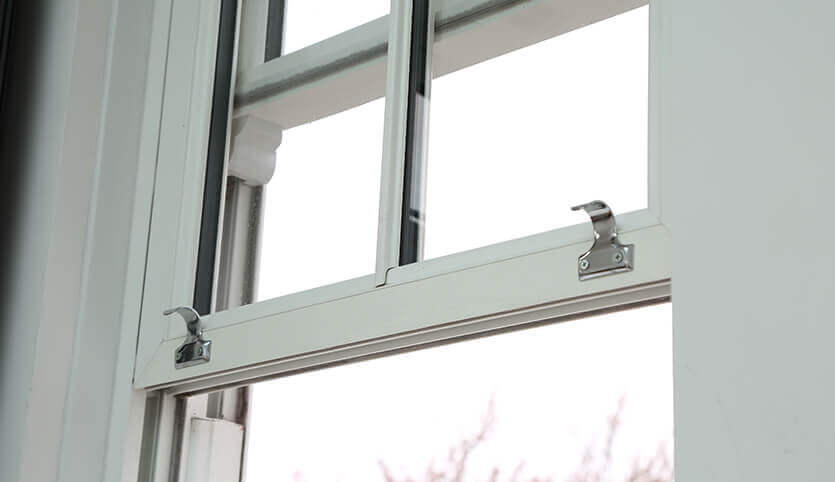
Among the most confused of terms, the sash is specifically that part of a window assembly that moves and holds the glass panes. You often hear of sash windows and think of the up-and-down type popular in period homes, but those are more correctly termed ‘sliding sash’ windows.
Secondary glazing
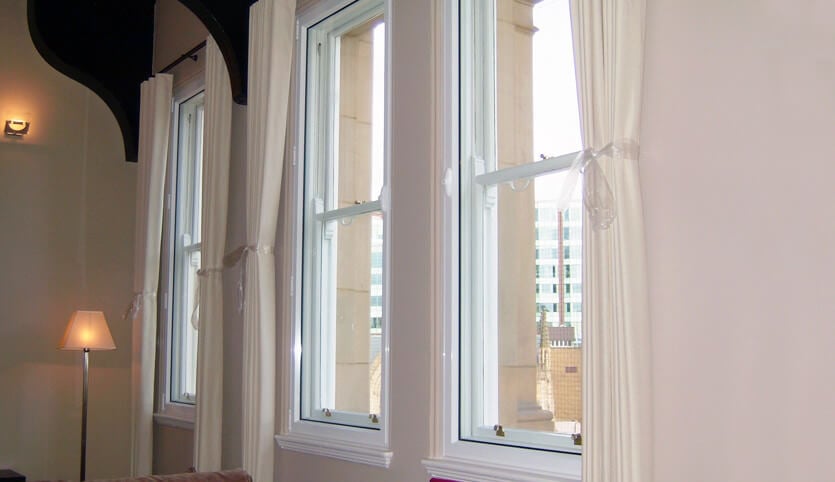
A single pane of glass fitted over existing single glazed windows, ideal for windows that cannot be altered due to planning restrictions, e.g. listed buildings and conservation areas.
Side hung
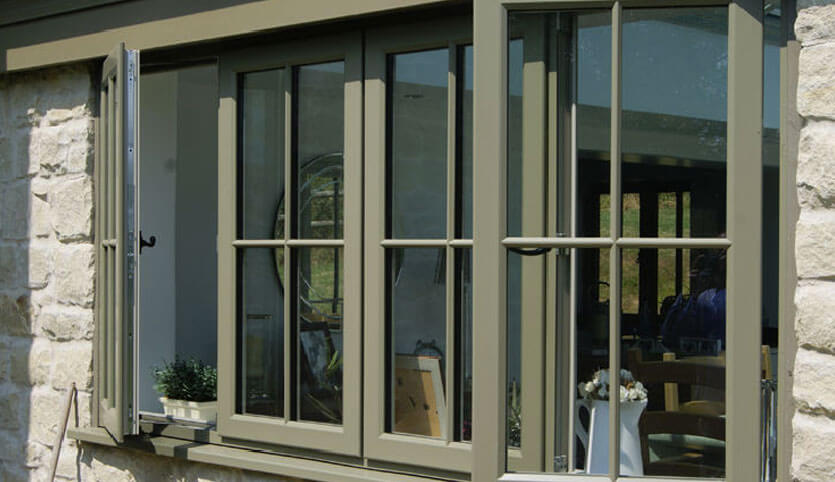
The window opens out from the side of the frame, e.g. a casement window.
Single hung
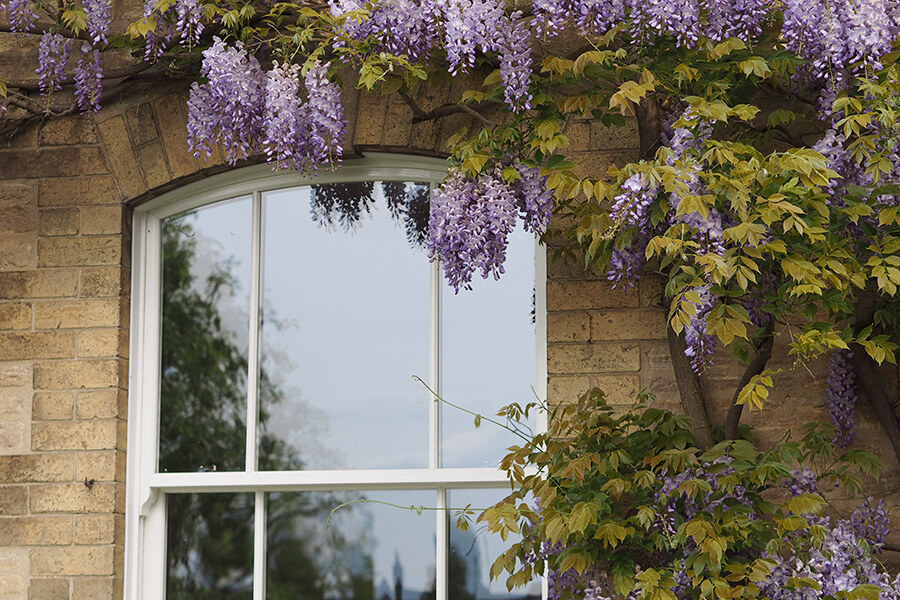
A single hung window has one moveable sash, keeping the top sash in place and the bottom sash in full operation, e.g. a sliding sash window.
Sliding folding window
Also known as a bi-folding window or a continental folding window, sliding folding windows feature a concertina style fold that can open inwards or outwards similar to a bi-fold door.
Sliding sash window / vertical sliding window
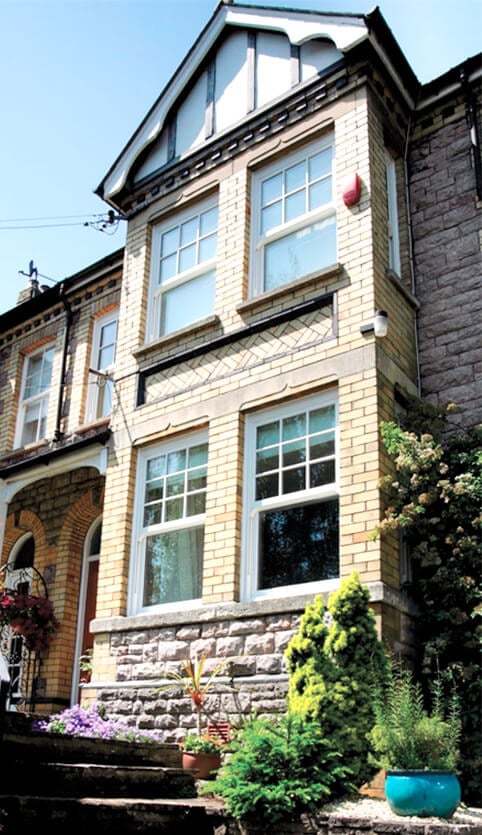
A window that consists of one or two movable panels (called sashes), that opens and closes vertically using counterweights, pulleys and cords, or a spring balance system. Frequently called simply ‘sash windows’, each sash is often divided into four or six panes. Commonly associated with Georgian and Victorian architecture and are available in timber or uPVC profiles.
Stile
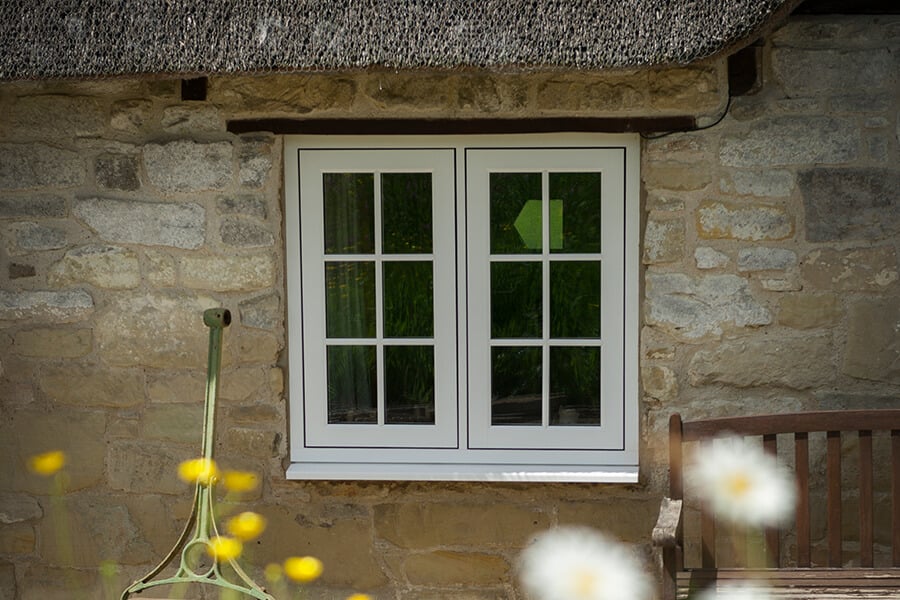
The vertical edges of the window.
Stormproof casement window
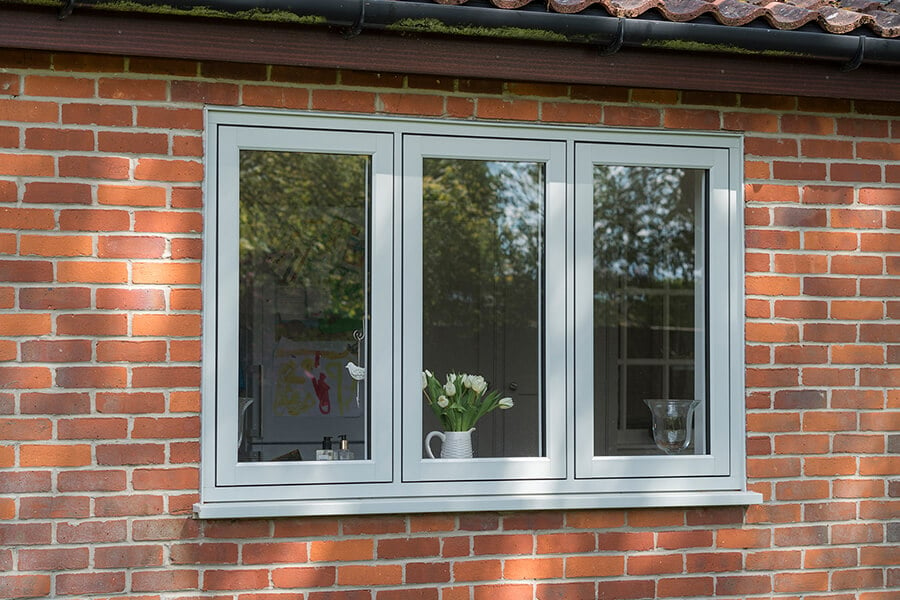
Stormproof windows, also known as 'lipped casements', slightly overlap the window frame to stand slightly apart from the window.
Tilt & turn window
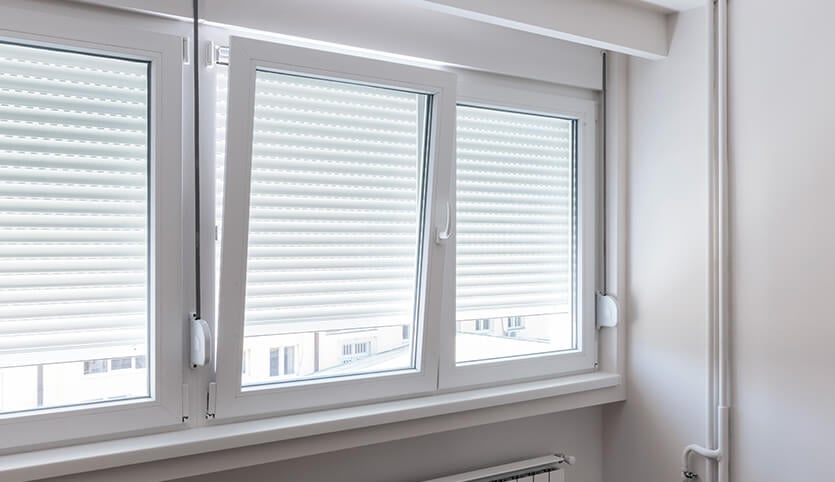
A window that can either be tilted via a top or bottom hinge, offering a small gap at the top for safe ventilation, or opened inwards from the side of the frame (like a traditional casement window) for easy cleaning. These type of windows are particularly popular in high-rise buildings or homes where exterior access is difficult.
Top hung / awning window
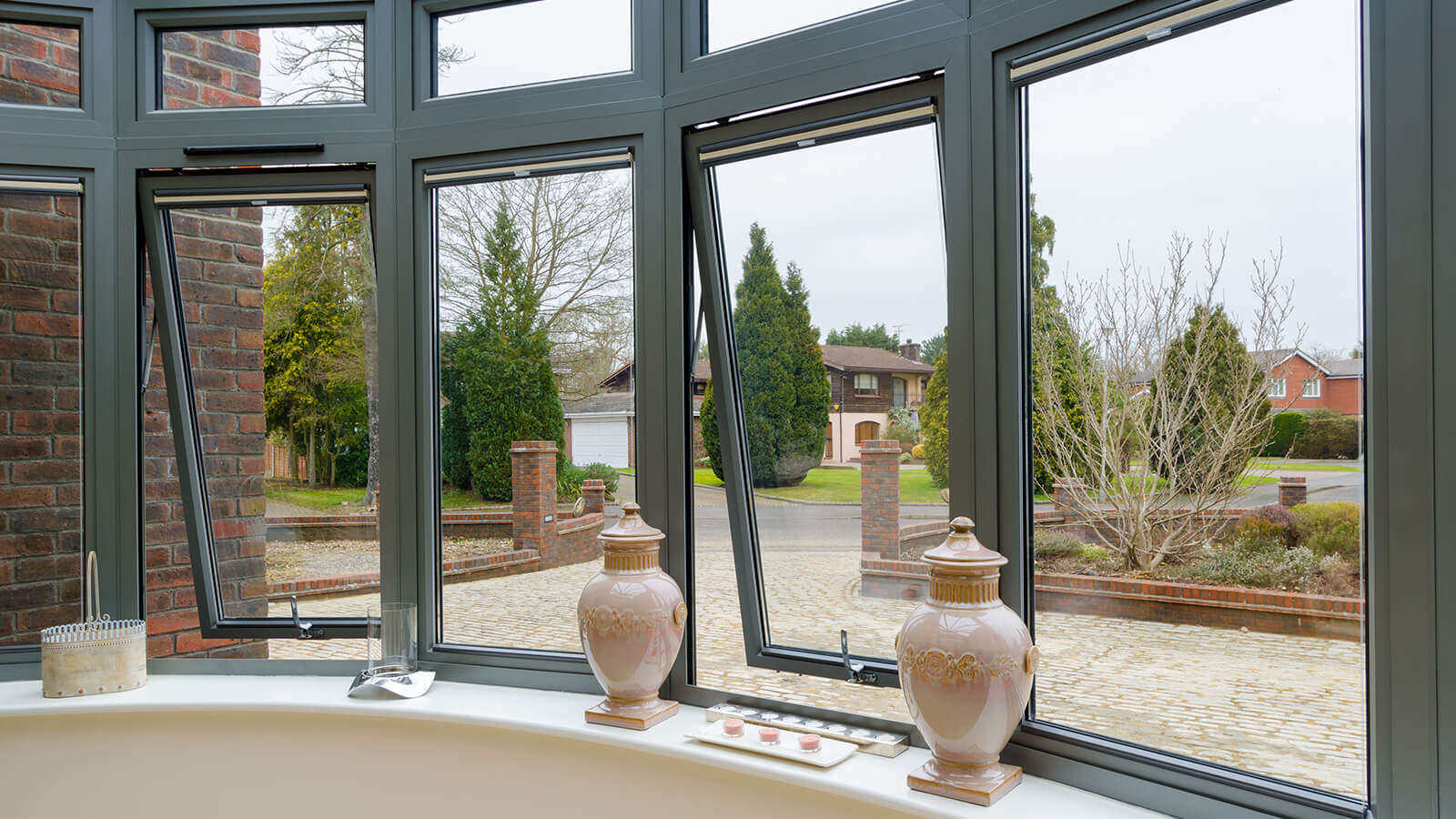
The window swings open from the top of the frame, e.g. a fire escape window or a roof window.
Top rail

The horizontal bar across the top of the window frame, which sits underneath the Head Jamb.
Travel restrictor
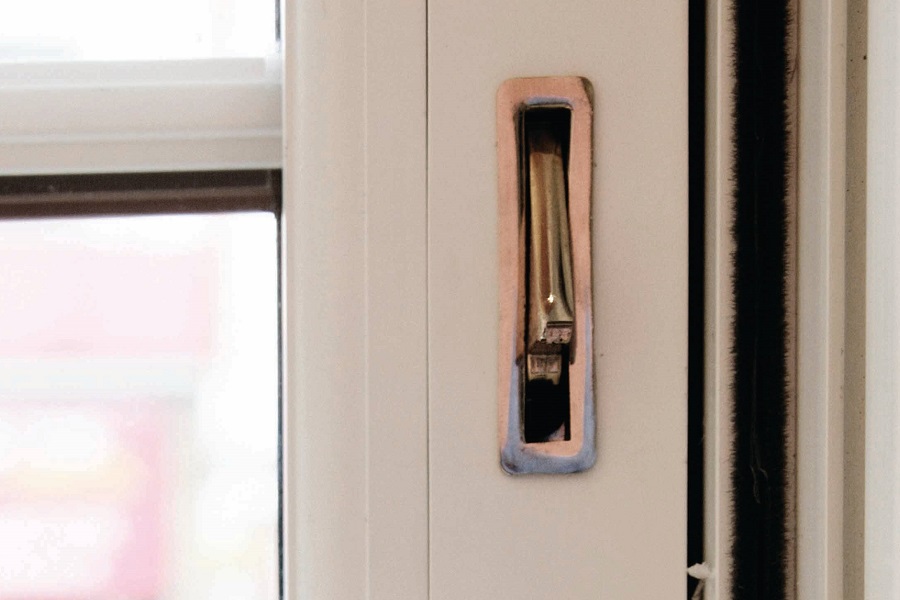
Travel restrictors are typically found on sliding sash windows. Positioned on the sash, they limit its opening and are often used as an aid to child safety.
Trickle vents
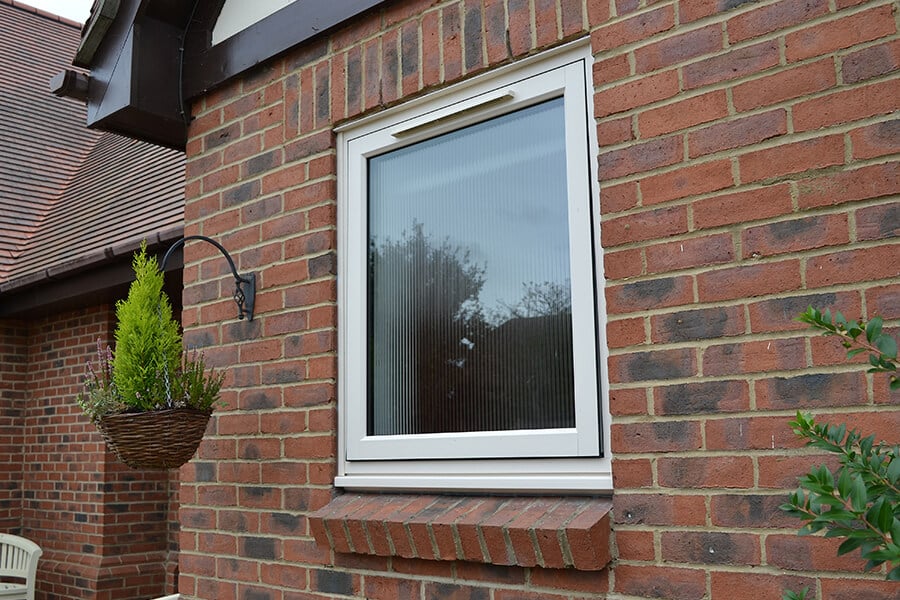
A trickle vent is the small slot or opening on a window that allows a room to remain ventilated when the window is closed.
Triple glazing
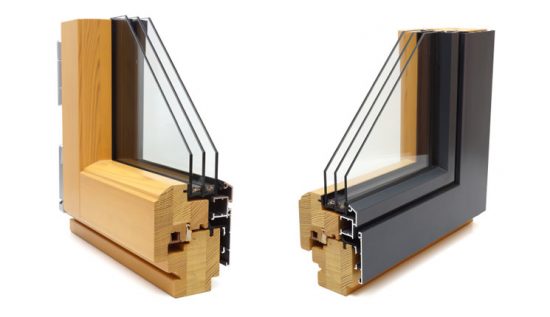
Designed to reduce heat loss, noise and UV rays further than double glazing, triple glazing consists of three panes of glass with two gas-filled spaces in-between.
U-value
U-value is an indication of the rate at which a component such as a wall, roof, or window transfers heat from inside to outside. It is measured in watts per meter squared-degrees kelvin (W/m2.K).
At its most simple, a window of a lower U-value indicates lower transfer of heat, so is a better insulator, than one of a higher U-value. Naturally, it’s not so simple as that, as manufacturers typically determine U-values in lab conditions, not once installed on a windy coastline in Essex. It’s also worth bearing in mind that the method of sealing and the frame design have a significant impact on the result.
Part L1A of current UK building regulations states that a window installation in a new home should achieve a U-value no higher than 1.4 W/m²K. For reference, older double glazed units generally perform less well than that at around 3W/m2.K, while single glazed windows are normally as high as 5W/m2.K.
Vertical jamb
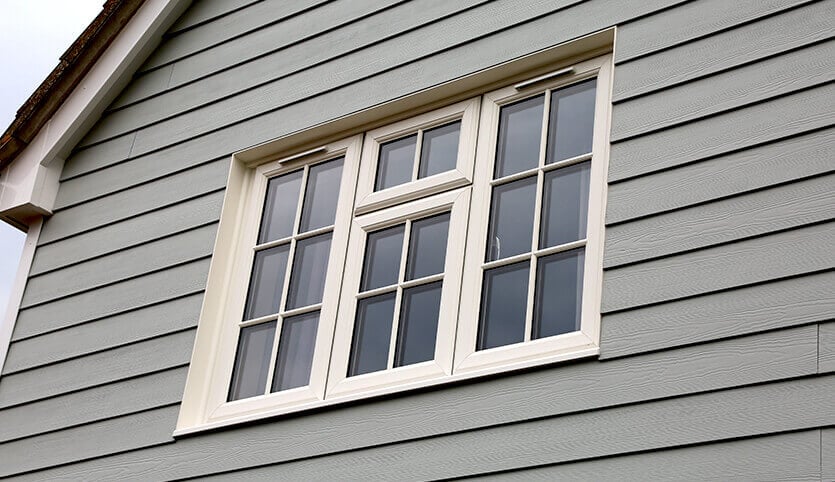
The vertical bars that form the sides of the window.
Window Energy Rating (WER)
Window manufacturers describe the energy efficiency of their products using an energy-rating scale from A++ to E. The entire window (the frame and the glass) is assessed to allow for heat loss, draughts and solar gain, giving a rating that indicates the overall impact of fitting that window in your home.
The British Fenestration Rating Council (BFRC) runs the scheme. To choose the most energy efficient window, look for the BFRC rating.
See also: Energy Saving Trust
Astragal bars
Traditionally, windows were constructed with smaller panes of glass to create larger windows in the most economical way. These smaller panes of glass were connected together with slimline bars. These days, these authentic bars are only used for decorative purposes. Astragal bars are fitted to the window pane internally and externally to give the effect of multiple panes of glass.
Bevelled / chamfered frames
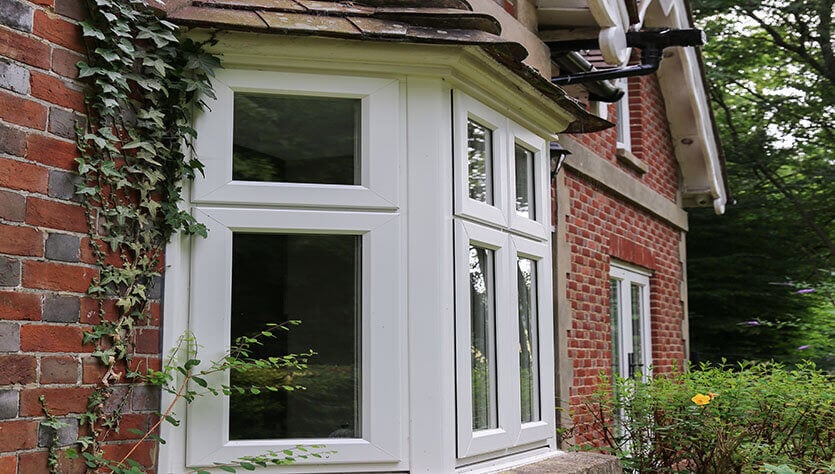
Bevelled or chamfered windows have a flat, sloped profile, ideal for both traditional and new buildings.
Georgian bars
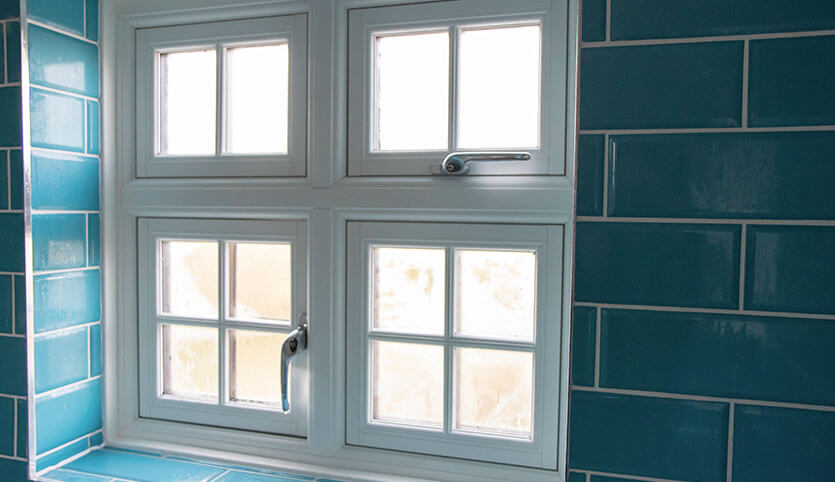
Georgian bars are also used to create period style windows, however they are sealed in between the layers of glazing rather than internally and externally.
Low-e glass
Low-emissivity glass has a microscopic coating applied that improves insulation by allowing solar energy to enter and then reflects it back into the room reducing heating demand.
Mullion
A mullion is the vertical load bearing section that separates individual windows. A traditional example of a mullion is in a typical church building, where individual windows are separated by stone mullions. They can be made of virtually any material, with modern mullions commonly made from timber, aluminium, steel and uPVC.
Multi-chambered profiles
Windows that feature multi-chambered profiles boast higher thermal efficient qualities, thanks to intricate symmetrical chambers within the window profile. These chambers break up currents of cold air and lock in pockets of warm air to keep homes at a pleasant temperature, for longer.
Muntin
A muntin is another term for a glazing bar; the strip that divides and holds individual panes of glass securely in place.
Ovolo frames
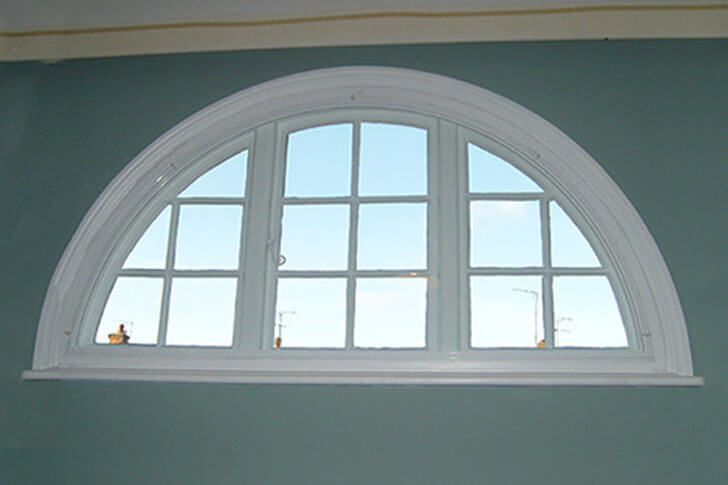
Ovolo or sculptured windows have a curved, decorative profile that’s ideal for period properties.
Sash horn
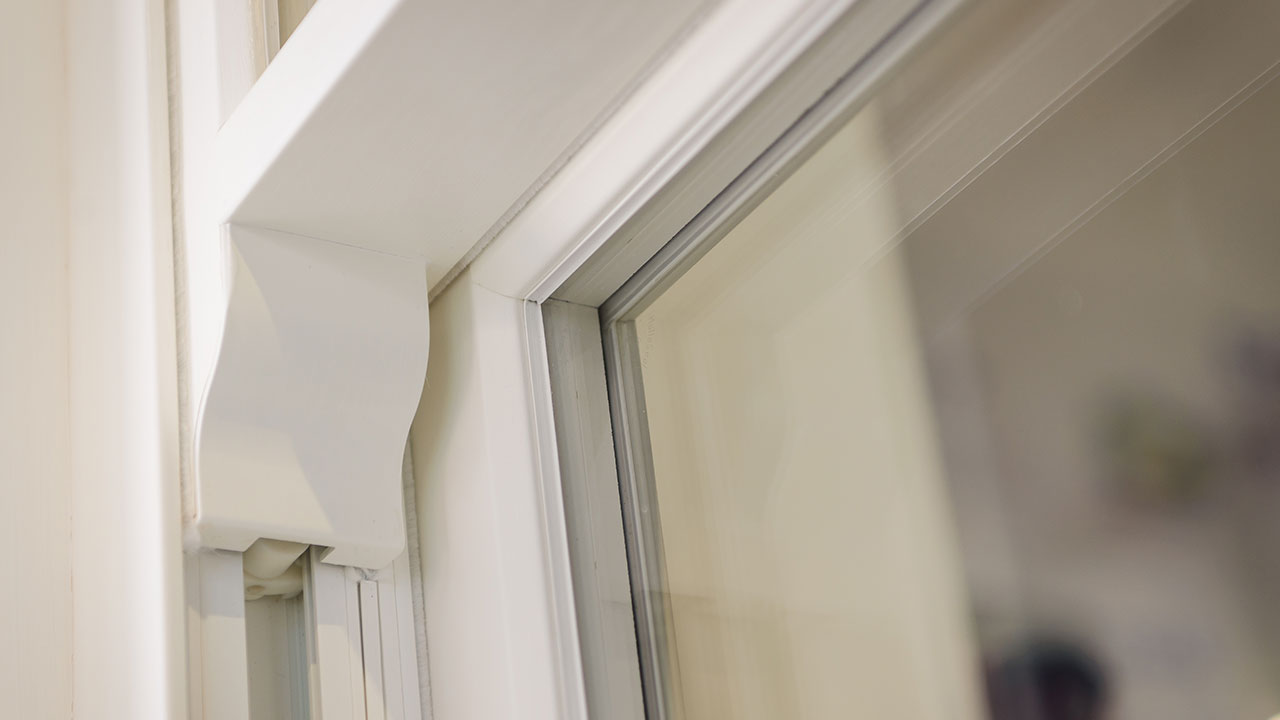
Sash horns are an original feature of authentic sliding sash windows and are usually curved or constructed in an elegant 's' shape design. Sash horns prevent timber windows from opening too much or getting jammed, as well as supporting the intricate elements of the window. As manufacturing technology has evolved, uPVC sliding sash windows have retained the classic sash horn detailing for decorative purposes only.
Transom
A transom is the horizontal version of the mullion and acts as a strengthening crossbar.
Warm edge spacer bar
Positioned around the inside edge of the glass, warm edge spacer bars keep double or triple glazed window panes apart. This proactively reduces heat transfer and external noise, as well as preventing condensation from forming on your windows. The term ‘warm edge’ is used because foam spacer bars are up to 940% less conductive than aluminium.
Doors
Bi-fold doors
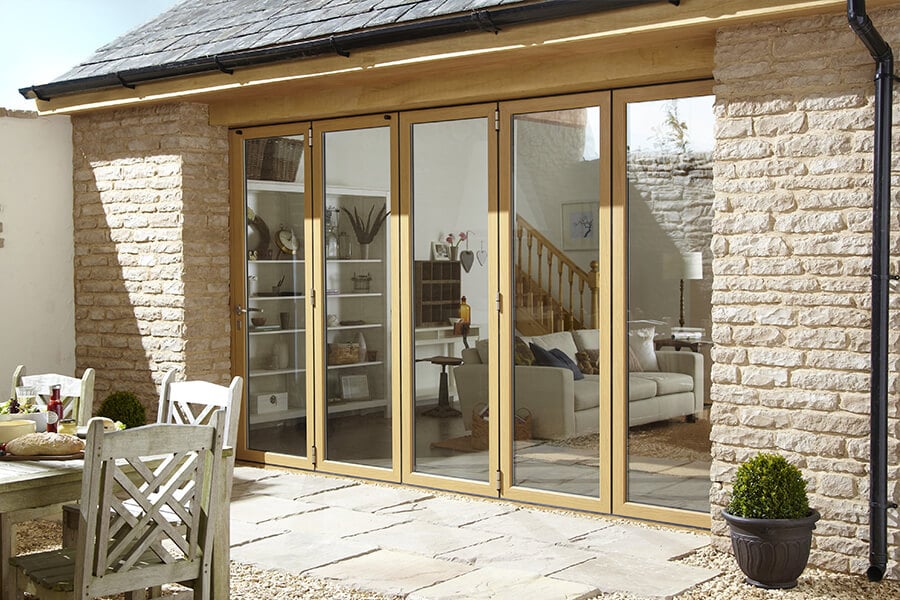
Also known as sliding-folding doors or continental folding doors, bi-fold doors are sliding doors with a concertina-style fold in which the door panels neatly collect to one side leaving a wide opening. With as many as eight door panels, you can create a fully glazed wall, depending on the size of the space. Opening up the room creates an open-plan feel between home and garden making them an increasingly popular alternative to traditional exterior French doors.
Doorset Energy Rating Scheme (DSER)
Door Set Energy Rating (DSER) is the product of the British Fenestration Rating Council (BFRC). It is rates products on a scale of E to A++ (A++ being the most efficient), the indicates how energy efficient your doors are.
Heritage door
Heritage doors are suited to period and historic properties and are either made from natural timber or high-performance uPVC that replicates the authentic appearance of a wooden door. Heritage doors are designed to meet conservation guidelines.
Low threshold
The threshold of a doorway forms the step between indoors and out. Low thresholds are available in a range of sizes to reduce the height of the step—ideal for occupants with mobility issues and families with young children.
Sidelights
Also known as sidelites, sidelights are narrow windows or panes of glass typically set alongside a door or a larger window.
Slave door
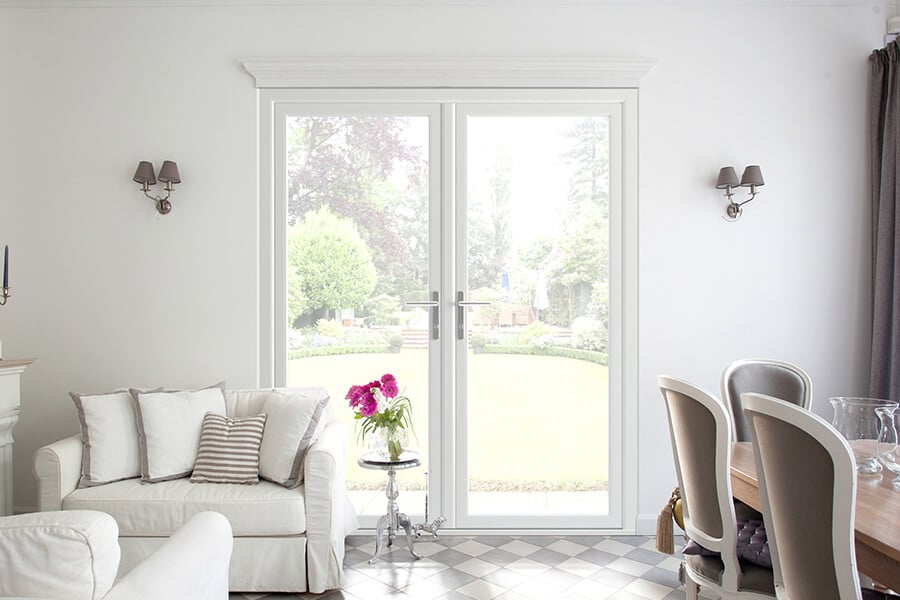
A door that is fixed in place, usually with a shoot bolt, e.g. French doors.
Sliding patio doors
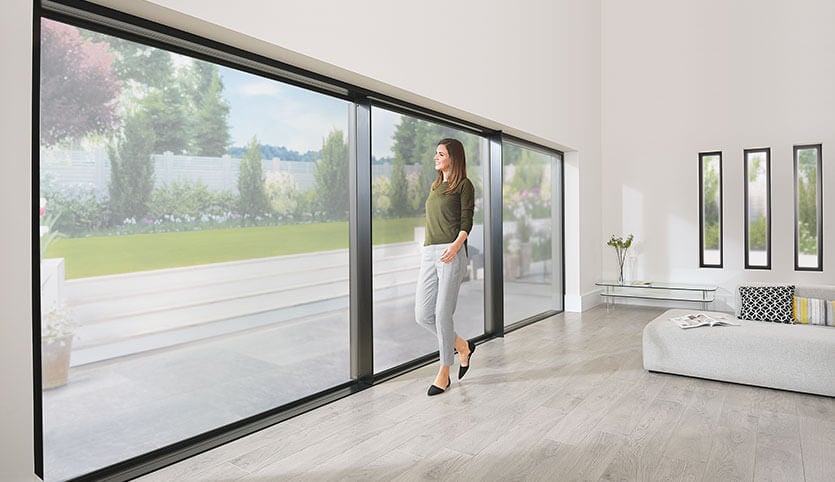
Sliding patio doors feature large expanses of glass that slide sideways to provide easy access to the building. Available in uPVC, timber and aluminium, these space saving doors are perfect for making the most of good weather and far-reaching views.
Traffic door
A traffic door is a conventional door that is built into a bifold door system. Depending on the number of door leaves, a traffic door can be hinged to the door-frame and operate independently or attached to the bifold system. Traffic doors save time in areas where it isn't practical to continually open the whole bifold system, as well as retaining warmth and saving money on heating bills throughout the winter months.
Dog bolts
Hinge bolts (AKA ‘dog bolts’) are steel pins fitted into the hinge side of timber door-leaves to reinforce exposed hinges, or to inward opening doors that could be vulnerable to kicking or barging.
French doors
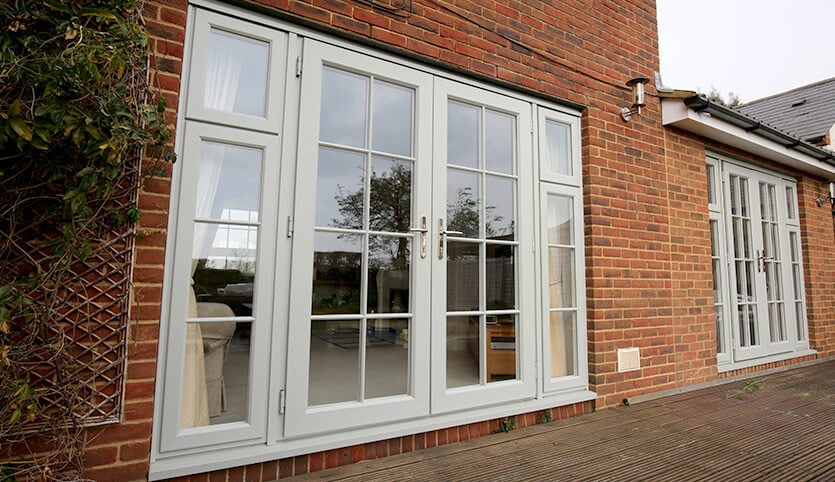
French doors feature a set of two glass panels, that can be opened inward or outward. Maximising the space in your home and garden, this continental door style is a popular addition to patio and conservatory entrances.
Multi-point locking
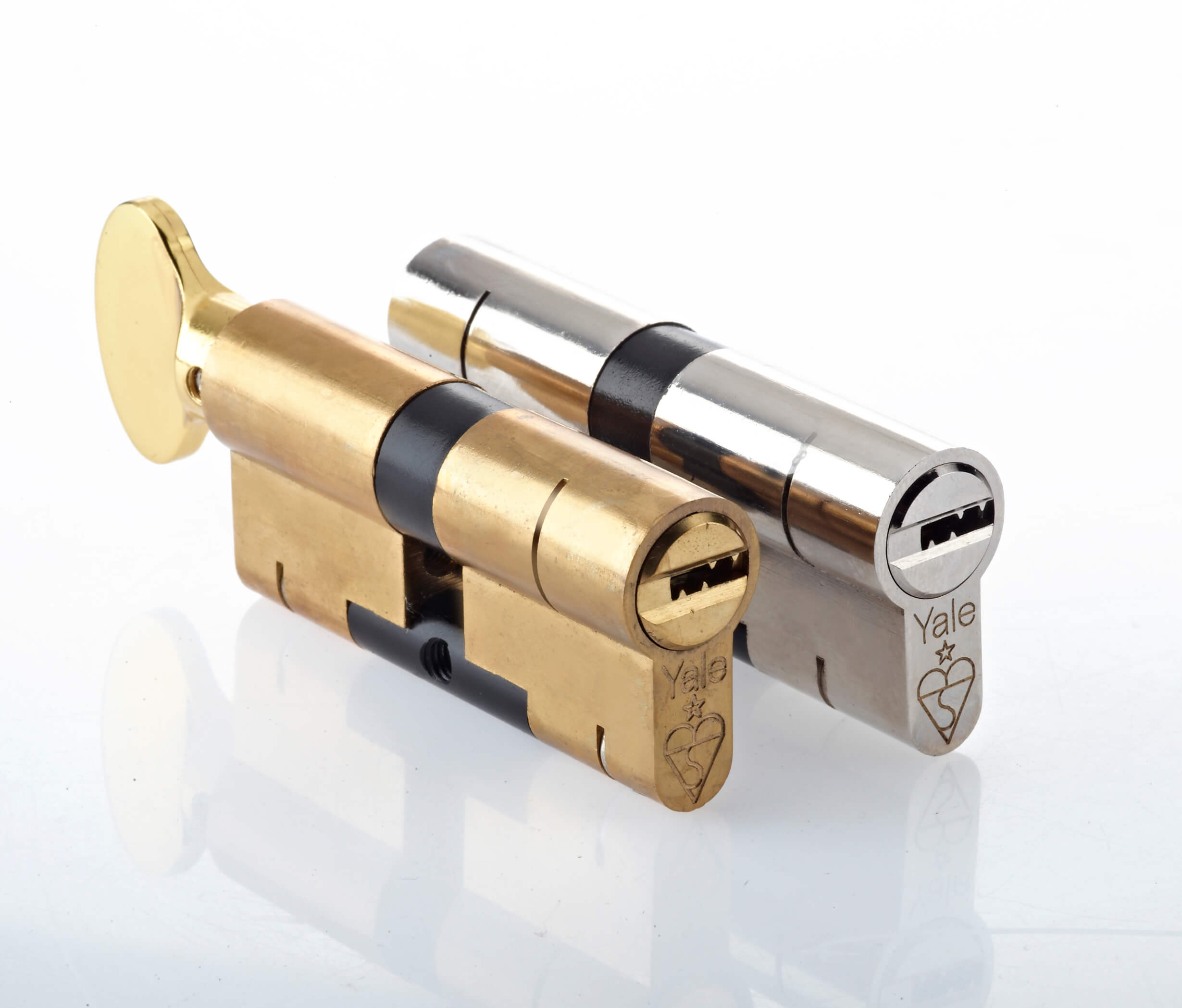
Multi-point locking systems dramatically heighten door security, by bolting the door into the frame and locking at multiple points with the simple turn of a key.
ABS skin
If ever there was a set of terms in need of abbreviating it’s Acrylonitrile Butadiene Styrene (ABS). An ABS skin is a coating used on timber core composite doors to strengthen them, actively resisting fading, discoloration and scratches ABS is also the material used to make Lego.
Aluminium
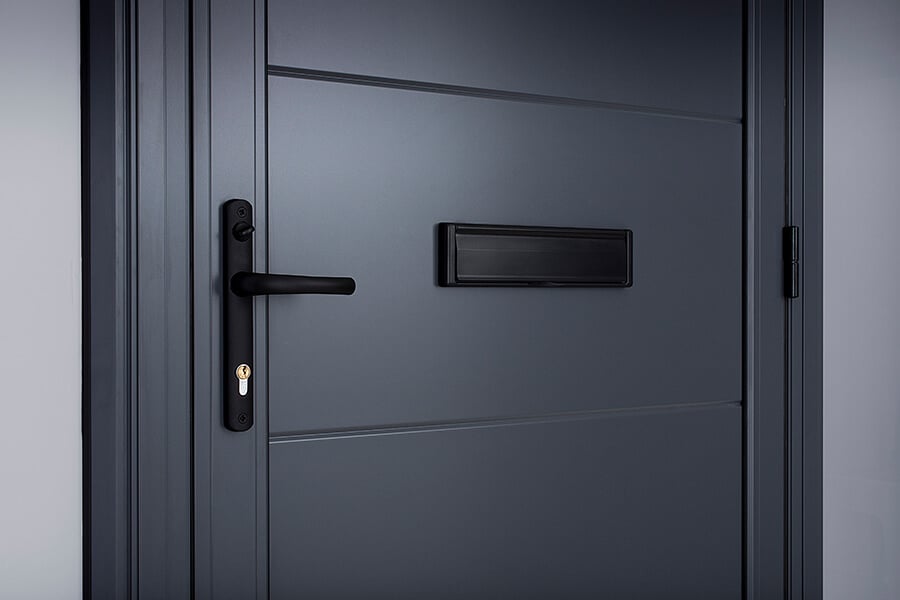
Aluminium has become a favourable construction material due to its recyclable, lightweight, durable and corrosion resistant features. Our aluminium doors are ideal for homeowners looking for an ultramodern door system that's strong, easy to use and can be moulded into virtually any shape or size.
Composite door
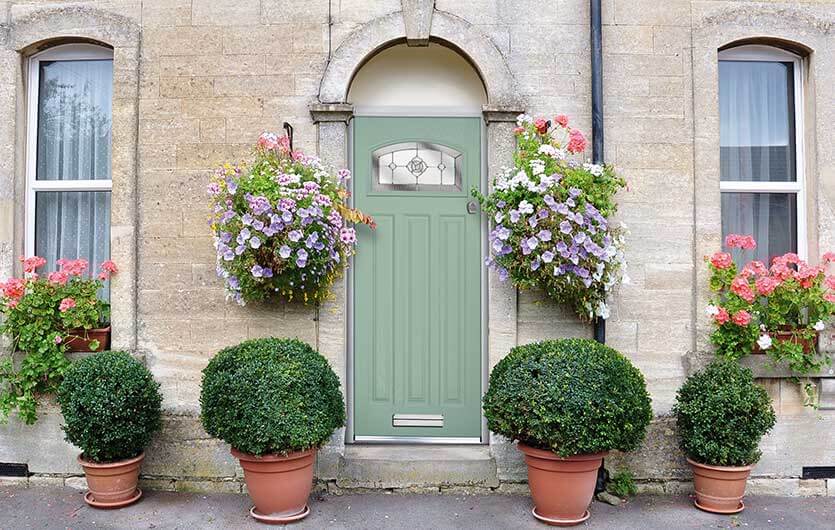
Composite doors are made of a combination of materials, such as wood, PVC, and glass reinforced plastic, which can make them stronger, more durable, and more secure than other types of doors. They are also energy-efficient, sound-proof, and weather-resistant. Although more expensive than other types of doors, such as wooden or uPVC doors their higher price is reflected in their quality, strength and longevity.
GRP skin
Glass reinforced plastic (GRP), is a coating used on high-density polyurethane foam filled composite doors to strengthen them. GRP actively resists issues such as warping, twisting, rusting, peeling and fading.
Polyamide break
Also known as a thermal break barrier, a polyamide break is a plastic barrier placed between the inner and outer frame of an aluminium door to make it more energy efficient.
Safety glass
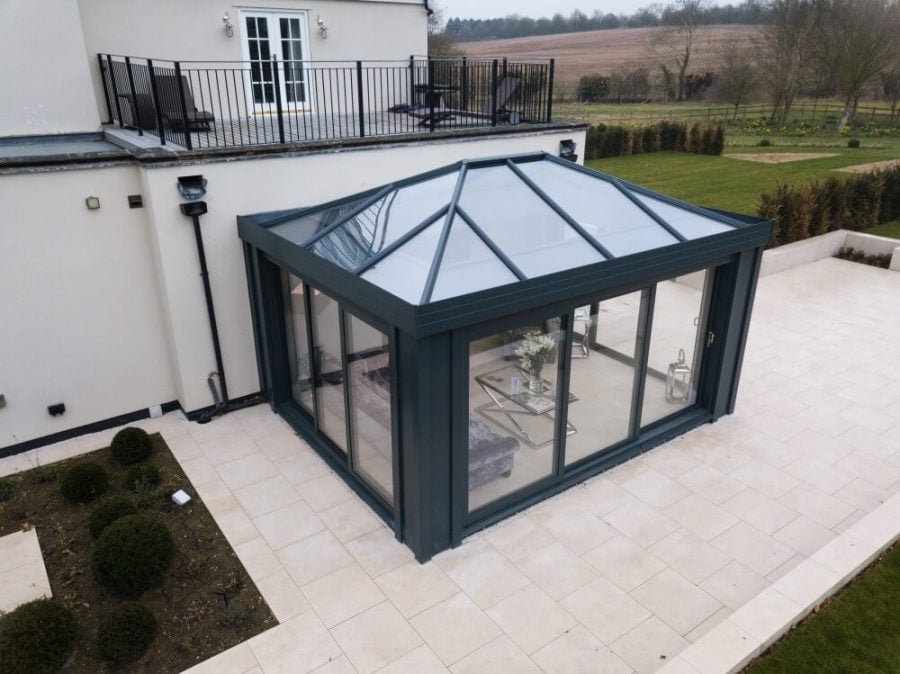
Also called toughened or tempered glass, safety glass is made with controlled chemical and cooling processes that increase its strength. When broken it does not shatter or splinter but is friable, safely crumbling into small pieces.
uPVC
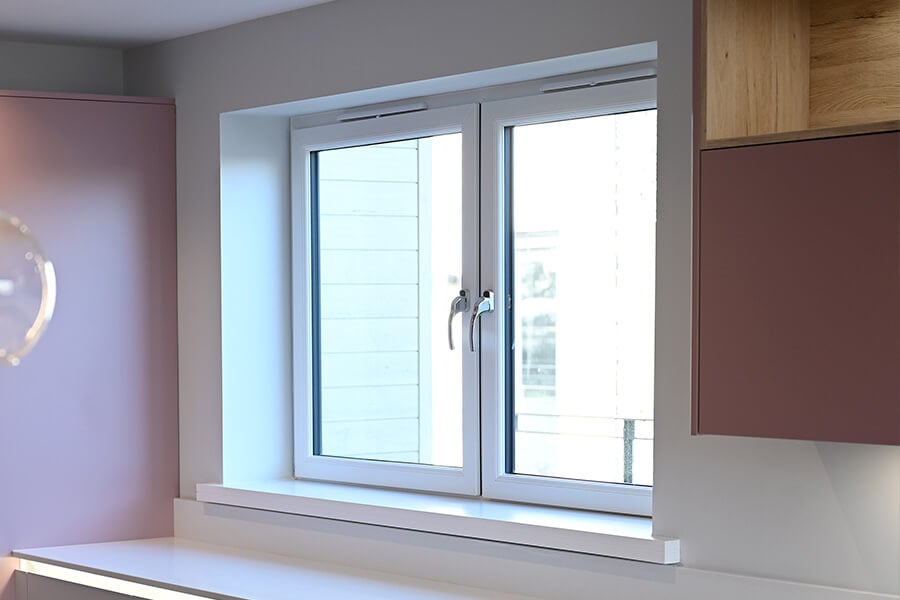
uPVC stands for 'Unplasticized Polyvinyl Chloride'. It is a popular door material due to its durability, weather resistance and low maintenance qualities.
Conservatories
Conservatory
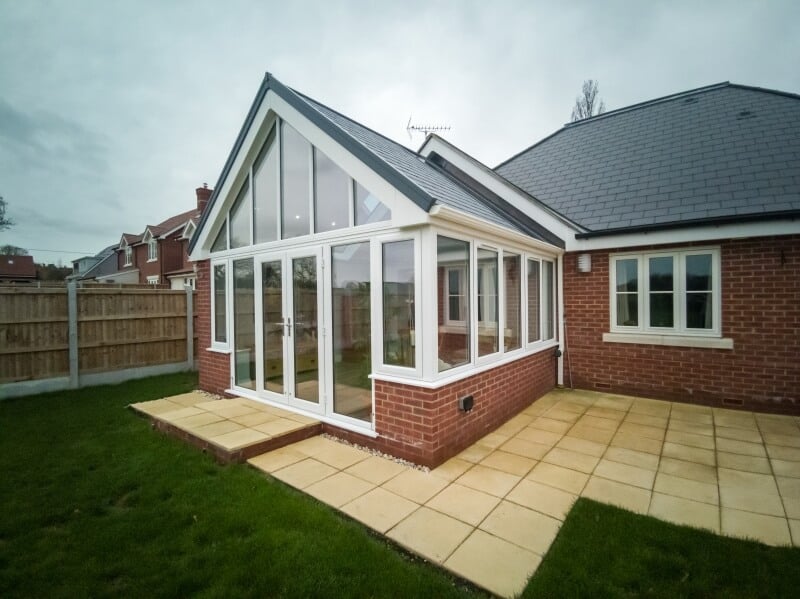
A room that's mainly made of glass, attached to one side of a house. Conservatories must be separated from the rest of the property by external doors and windows and fitted with their own independent heating system that's controlled separately from the rest of the house. There is also a collection of rules and regulations that the structure must adhere to, to avoid having to obtain planning permission to build it.
Cornice
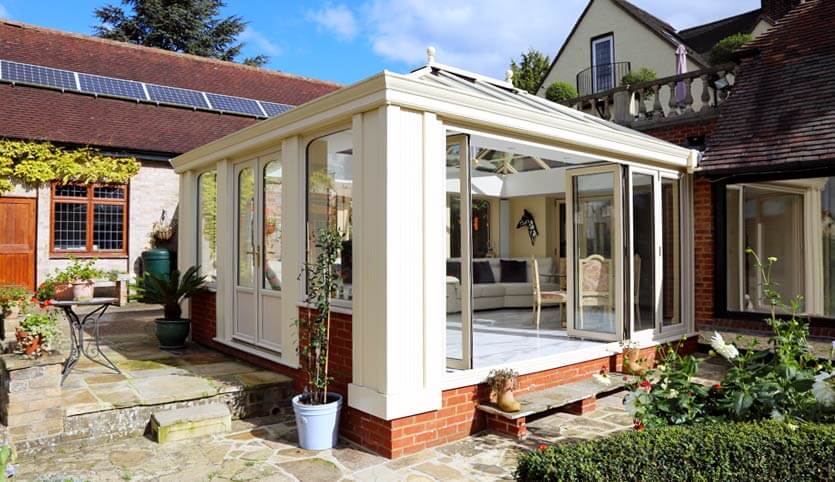
The purpose of a cornice is to protect the structure from rainwater and hide the conservatory guttering and rafter ends, for a clean and attractive finish. Cornices can be added to new or existing conservatories, orangeries or extensions.
Edwardian / Georgian Conservatory
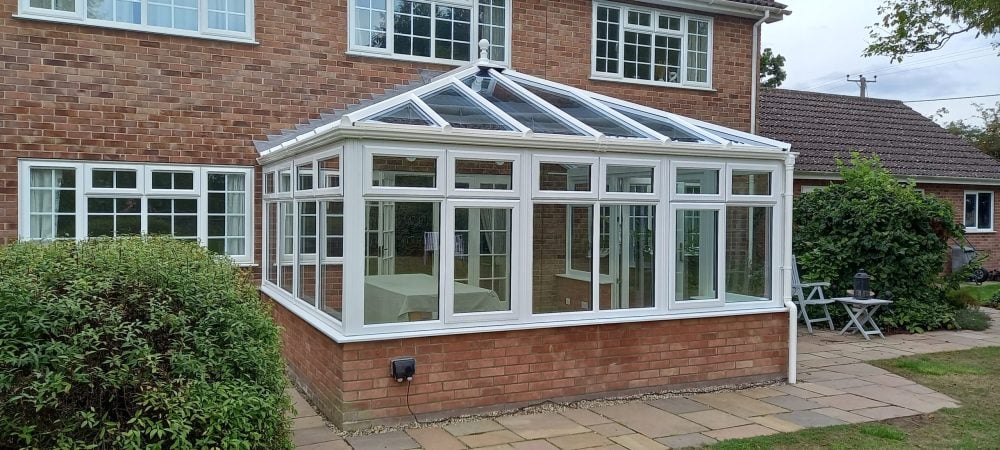
Also known as Georgian conservatories, Edwardian conservatories have a square or rectangular floor, a sloping ridged roof and symmetrical flat sides.
Gable conservatory

A variant of the Edwardian/Georgian conservatory style, Gable conservatories have a rectangular floor with a triangular front and a high vaulted roof that meets in the middle.
Internal downlights
Spotlights that are integrated into an extensions’ ceiling.
Internal plastered soffit system
A way to create a modern look inside a conservatory, offering effective ventilation so that air can flow freely through the roof area to provide additional protection against condensation.
Lantern roofs
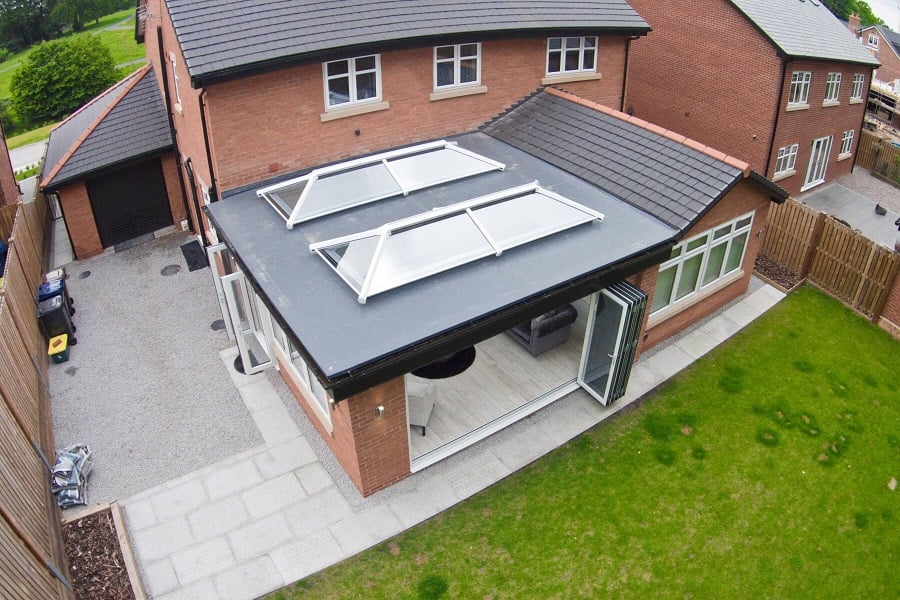
Lantern roofs are made up of angled glazed panels that allow the light to flow in, which creates a stunning architectural glazed focal point. Lantern roofs can be added to conservatories, orangeries, extensions and any flat roofed structure.
Lean to conservatory
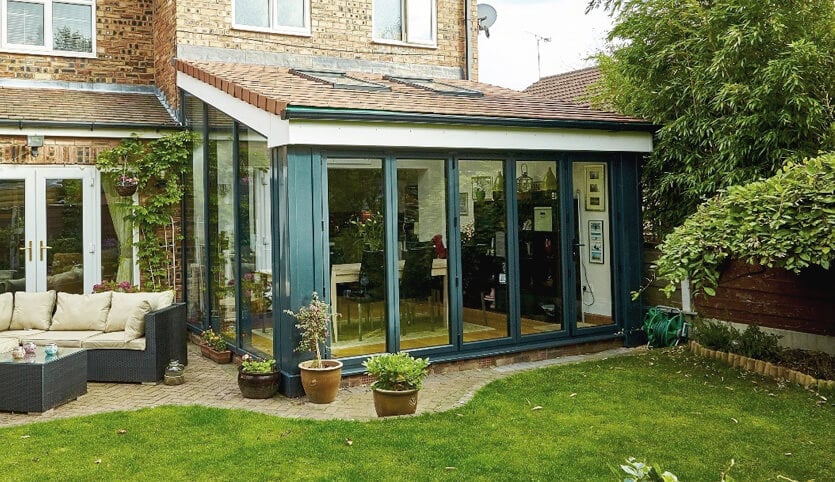
Lean-to conservatories have a variable sloped roof that leans onto the main property.
P shaped conservatory
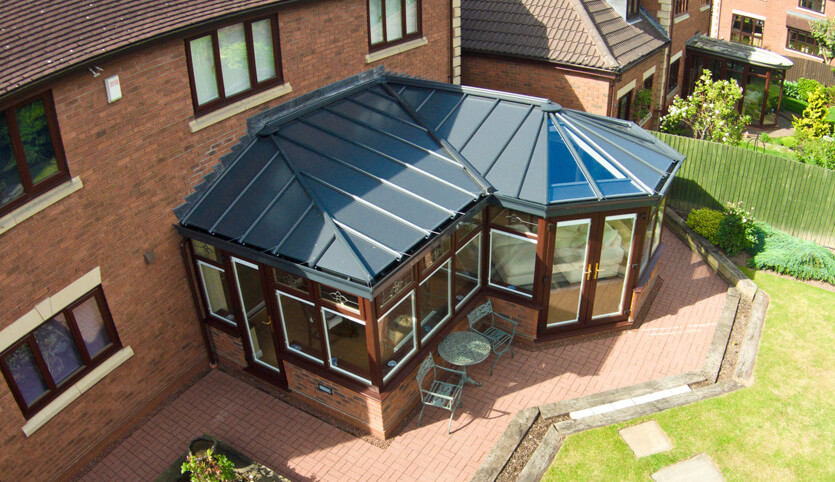
Ideal for larger, detached properties, P shape conservatories combine the long and rectangular Lean to style with the curved Victorian conservatory style.
T shaped conservatory
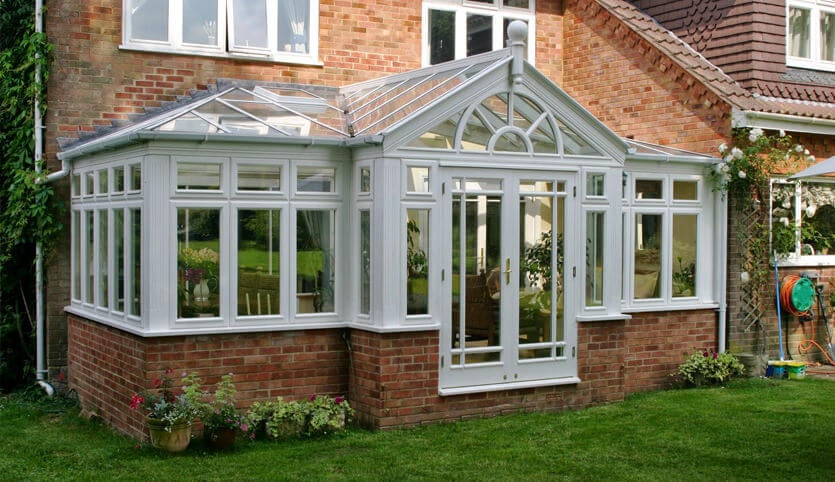
Ideal for larger properties, T shape conservatories are known as a 'combination conservatory'. Featuring a central projection, they can be Victorian, Gable or Edwardian/Georgian in style.
Orangery
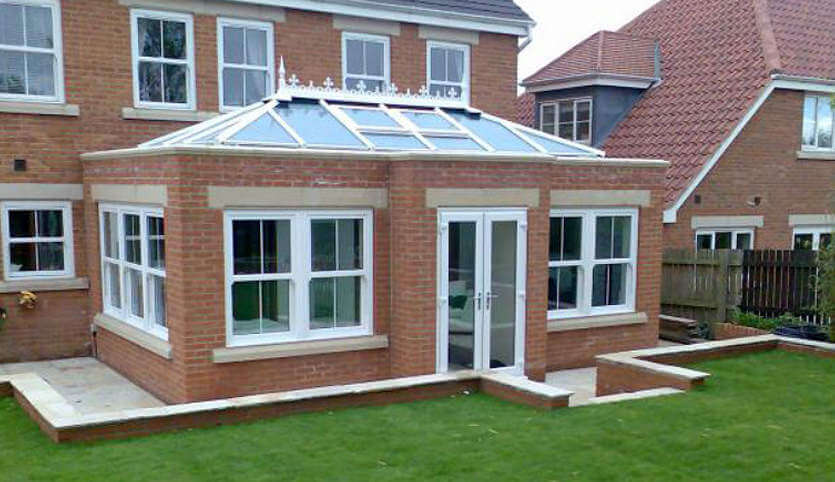
Orangeries were originally built by wealthy landowners to protect their valuable citrus trees from wintery, icy conditions. Now added to homes in need of more space, light and character, orangeries feature brick and solid sections; ideally bridging the gap between conservatories and extensions.
Victorian conservatory
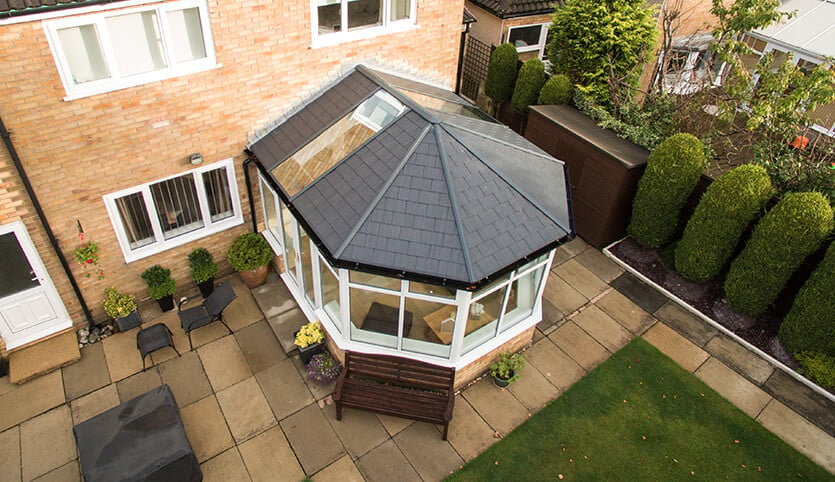
Victorian conservatories have elegant pitched roofs, with three or five facets (sides) that create a beautiful curved appearance.
Clad over roof
A conservatory clad over is when insulation, timber, tiles and plasterboard are typically placed over and fitted to an existing polycarbonate or glass conservatory roof. Read our blog post to find out why they should be avoided at all costs.
Crestings & finials
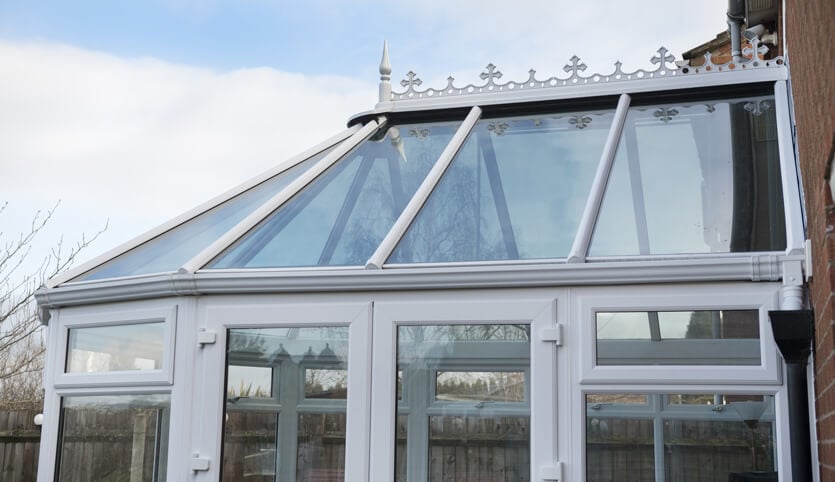
Typically recognised as stylish spikes positioned on top of conservatory or orangery roof frames, other than a decorative finishing touch, the primary function of crestings and finials is to deter pigeons and other birds from perching on the roof and making a mess and/or causing damage.
Insulated columns
5 times more thermally efficient than brick columns, insulated columns improve an extensions' energy efficiency thanks to their carbon-enriched filling, whilst adding a stylish modern twist.
Self-cleaning glass
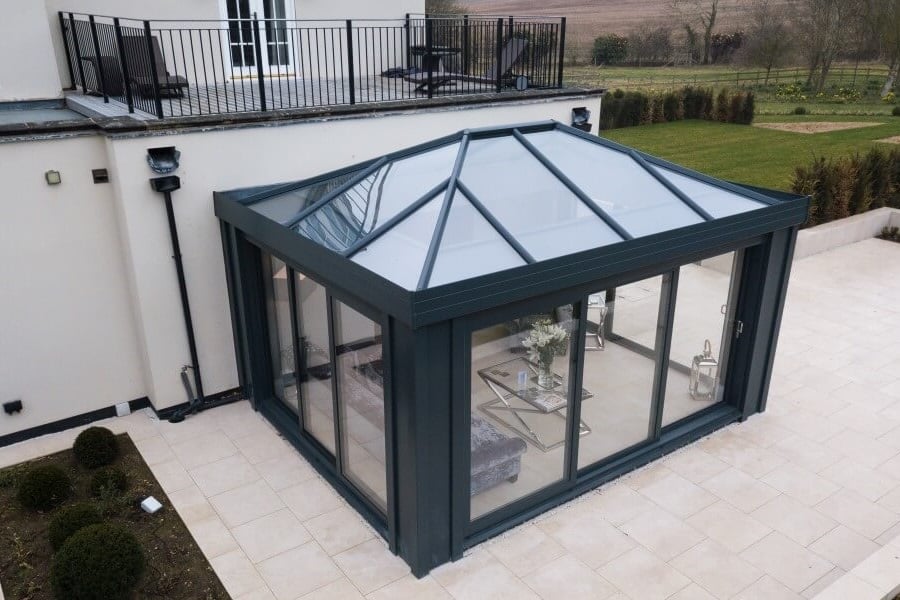
Glass covered with an ultra-thin coating that reacts with daylight to break down dirt.
Polycarbonate roofing
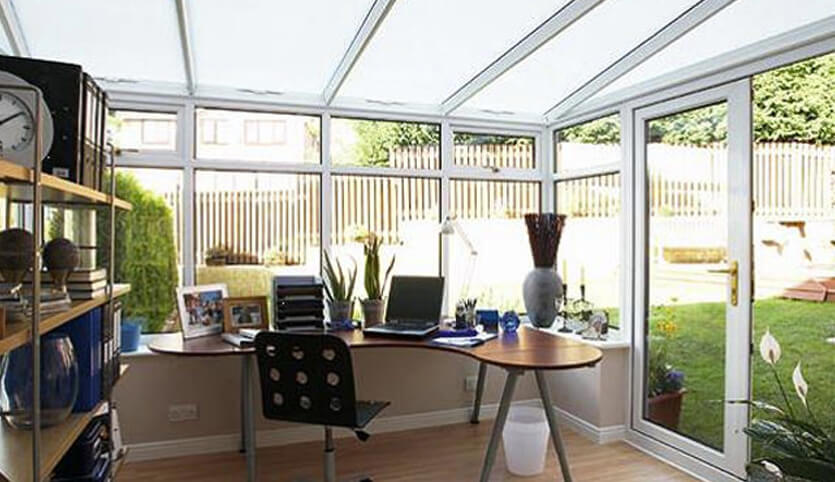
Polycarbonate is a robust thermoplastic material, mainly used as a cost-effective, lightweight and tough conservatory roofing option.
General
Home improvement finance
Home improvement packages allow you to improve your home on a payment plan that suits your lifestyle.
Anti-jemmy bars
Secure metal strips that are fitted to the lock edge of outward opening doors and windows that prevent them from being prised open.
AONB
Local planning authorities have the power to designate Areas of Outstanding Natural Beauty (AONB) for conservation purposes under the Countryside and Rights of Way Act 2000 (CROW Act), if they deem the area to have significant landscape value. AONBs face restrictions on certain improvements.
Argon gas cavity infills
Argon gas is inserted between the panes of glass in a window or door to increase its energy efficiency, due to the fact that argon has 34% lower thermal conductivity than air.
Case study

Case studies provide potential customers with useful examples of previous installation work.
Conservation area
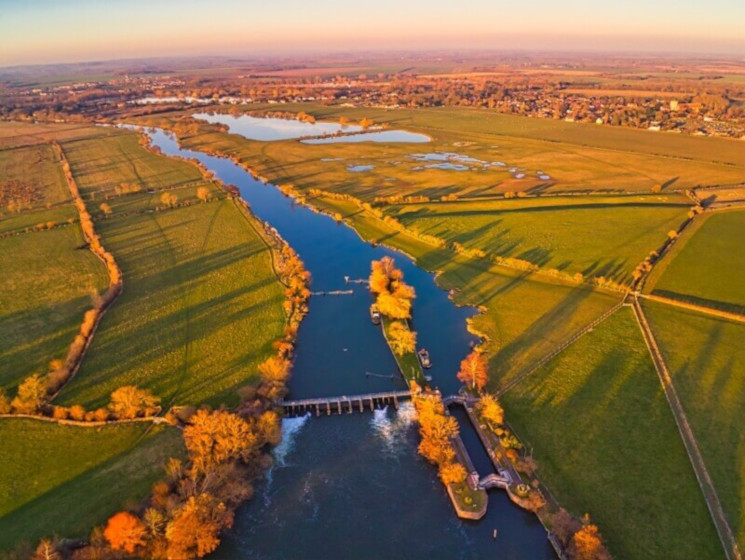
The official definition is "an area of notable environmental or historical interest or importance which is protected by law against undesirable changes". Conservation areas face restrictions on certain improvements.
Fanlight
Also known as a 'transom window' in the U.S, a fanlight is a small semi-circular or rectangular window located above a door or another window.
FENSA accredited

If a double glazing installer is FENSA accredited it means that their work won't need separate Building Regulation approval from the Local Authority.
Furniture
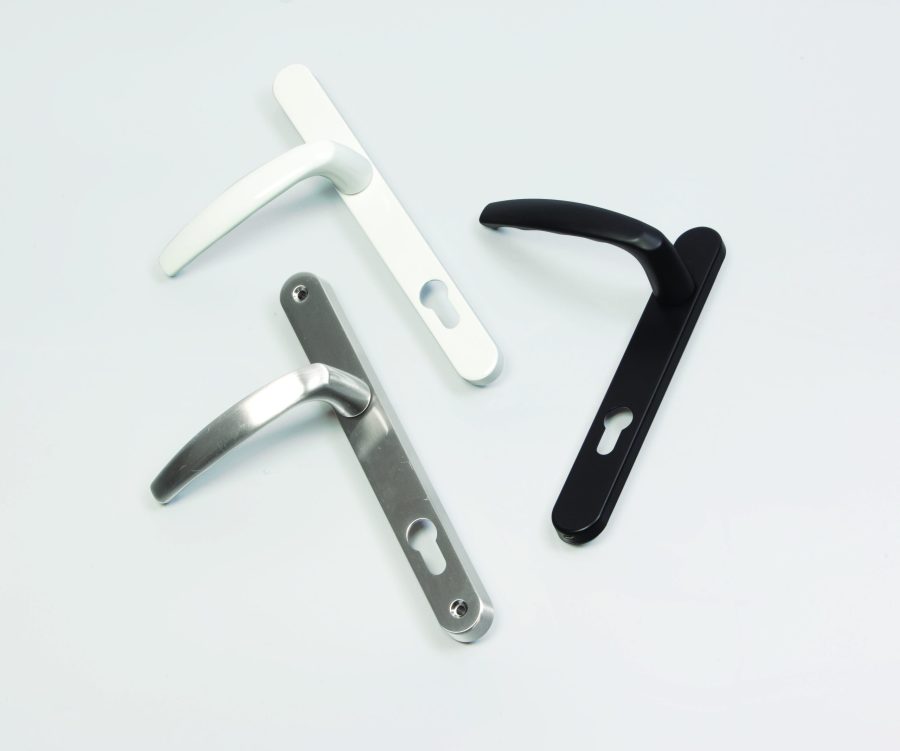
Window or door furniture refers to the additional aesthetic elements that can be added to enhance its appearance, e.g. ornate window and door handles.
Hardware
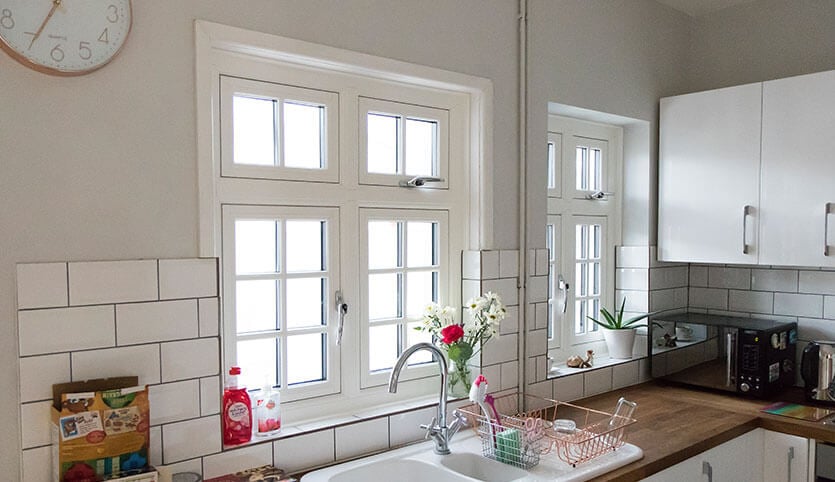
Window or door hardware refers to the elements that make them function properly, e.g. window fasteners and door hinges.
Home extension
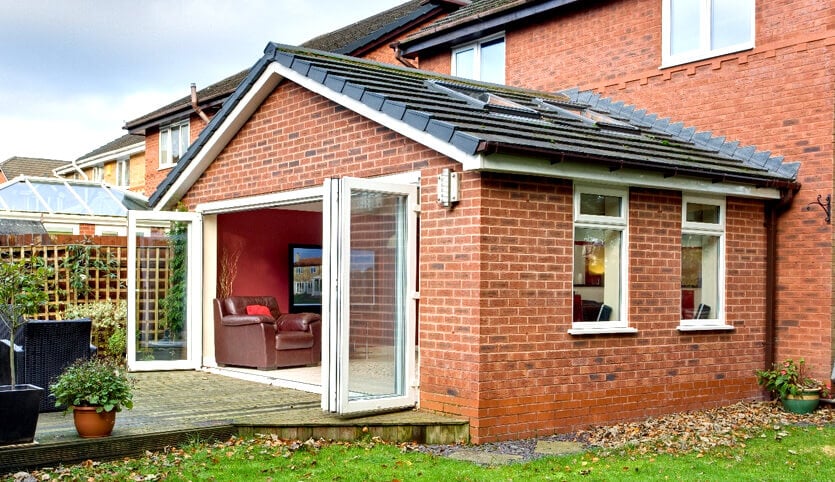
A new room or building that's added on to an existing building.
Integral blinds
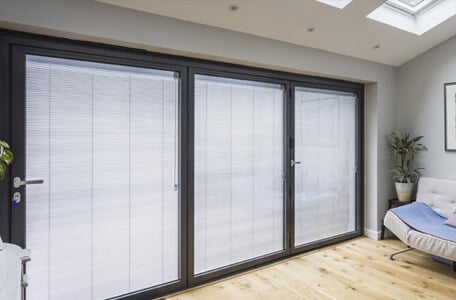
Blinds that are enclosed in between double or triple glazed windows and doors.
Listed building
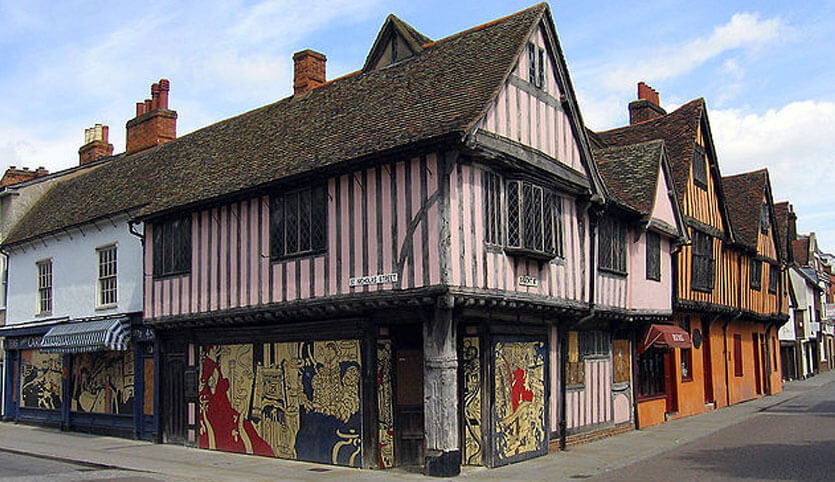
The official definition is "a building is listed when it is of special architectural or historic interest considered to be of national importance and therefore worth protecting. Listed buildings face restrictions on certain improvements.
PAS 24 accreditation
If a home improvement product has been PAS 24 accredited, it means that it has met rigorous test standards used to assess its security performance.
Show centre
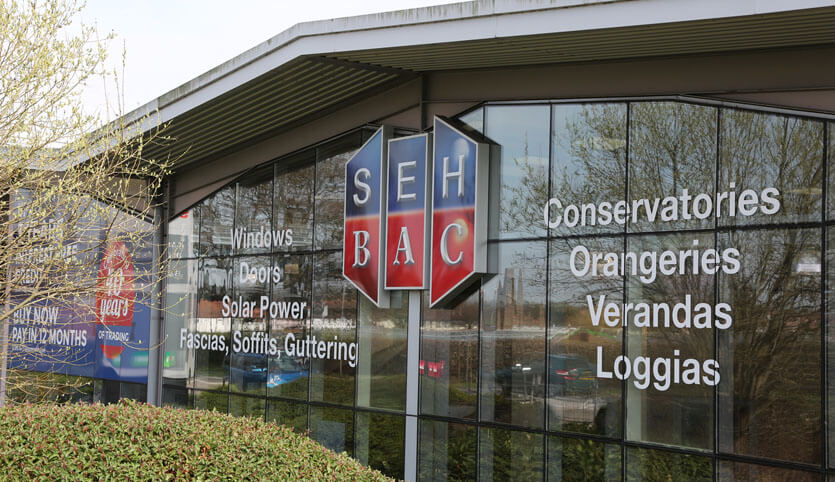
Also known as a showroom, a show centre offers a large display of products for sale.
TGAS accredited

If a double glazing installer is TGAS accredited it means that customer is fully covered by an official alternative dispute resolution scheme, in the unlikely event that something should go wrong.
Thermal break barriers
Used within high quality aluminium, thermal breaks are plastic barriers placed between the inner and outer frame to prevent heat from escaping.
TrustMark accredited

If a double glazing installer is TrustMark accredited it means that they exhibit good trading practices, customer service and technical competence.
Visible light transmittance
Also known as VLT, visible light transmittance measures the amount of daylight that can pass through a glazing system. So, when a glazing system has a low tint percentage it means there are more restrictions on exterior light entering the space.
Warranty
A written guarantee issued to the customer, that promises to repair or replace a particular product (if necessary) within a specified period of time.
General finishes
Bevelled glass
Bevelled glass is thick glass that has been cut to create an angled surface. Cut into diamonds, squares, rectangles, tear drops and many more distinctive shapes, bevelled glass creates attractive natural lighting effects.
Dual colour

Dual colour refers to windows, doors and frames that are different colours internally and externally.
Etched glass
Etched glass is a type of obscure glass that's created with a sandblasting technique, primarily used to enhance privacy levels without obscuring natural light from entering the space. A collection of artistic designs, in a range of privacy levels, can also be incorporated into the etching to create unique doors, windows, side panels or over the door top lights.
Frosted glass
Frosted glass is a type of obscure glass that's created with a sandblasting or acid etching technique, most commonly used in bathrooms, offices and front doors. Frosted glass allows light to pass through it, whilst retaining a homeowners privacy by distorting and blurring details; making it semi-transparent.
‘Kolorbond’ system
A special coating that forms a molecular bond with the surface of uPVC windows and doors. Guaranteed to last for over 10 years, it is UV and abrasion resistant and doesn’t require repainting.
Marine finish
Although aluminium home improvement products are incredibly resistant to corrosion, an additional marine finish coating can be added to aluminium frames to make them withstand the harshest coastal conditions.
Microporous paint
Microporous paint is a coating used on timber windows and doors, which provides a protective barrier against liquid water, whilst allowing water vapour to pass through. This lets the timber breathe.
Overlay stained glass
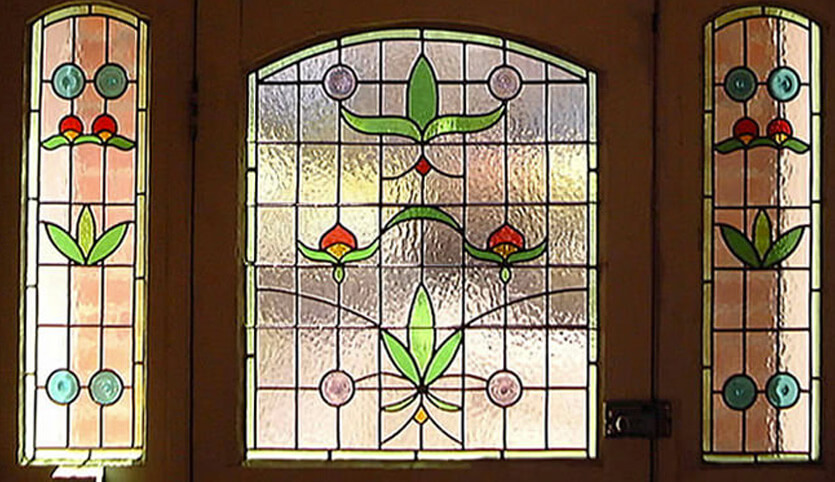
Overlay stained glass is a modern technique that serves to keep the beautiful ancient art of stained glass alive, in a fraction of the time original stained glass took to produce. The process of creating overlay stained glass involves bonding small coloured glass pieces on to an existing pane of glass, which is then covered with lead strips on both sides of the glass.
Powder coating
Powder coating is a surface refinishing process. Instead of using evaporating solvents as the means of applying the colour, it is typically applied electrostatically as a coloured thermoplastic and then cured under heat. It is used to create a thick, tough finish that is more durable than conventional paint.
RAL colours
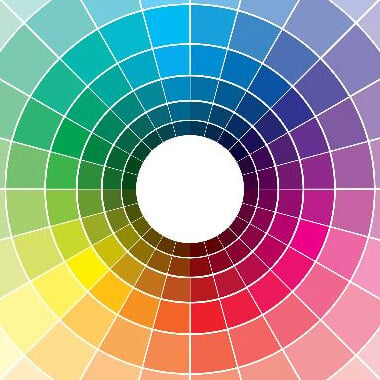
RAL is a colour matching system that defines colour for paints, coatings and plastics. There are several palettes of RAL colours. The RAL colour standard was established in 1927 by the Reichs-Ausschuß für Lieferbedingungen (Imperial Committee for Delivery and Quality Assurance).
Solar control glazing
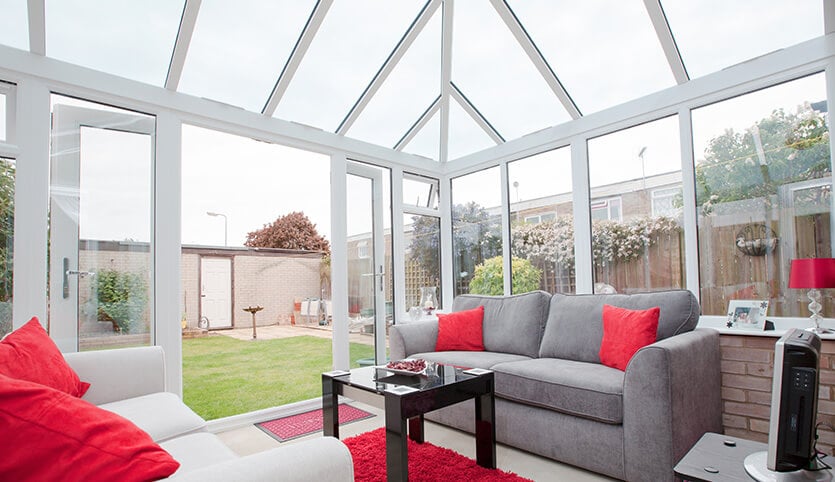
A special coating applied to glass that lets the right amount of the sun’s energy in; keeping the space warm in winter and cool in summer.
Tinted glass
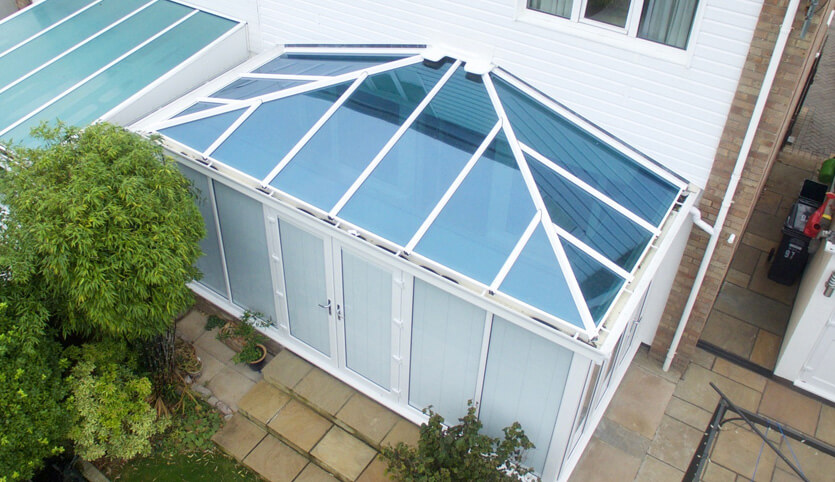
Tinted glass is any glass that has had a colour added to it. Tinted glass can be utilised in a number of ways, including increasing privacy, solar control and UV protection.
Woodgrain foils
Woodgrain foils are a form of laminate applied to the surface of uPVC, to create a high quality, virtually unbreakable finish.
Woodgrain / wood stain effects
Woodgrain or wood stain effects are a special finish applied to uPVC or aluminium that replicate the look of wood.
Begin Your Project
Get your free quote – with no-obligation to buy. Simply fill in the online contact form below to get started:
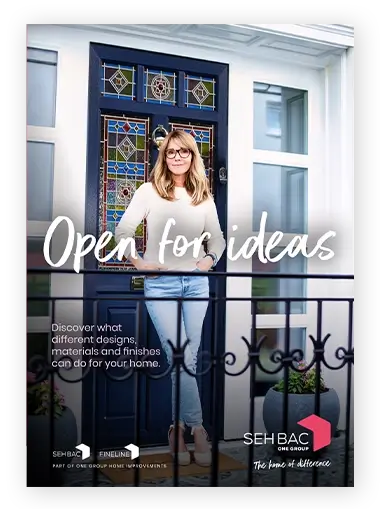
Get inspired with our product brochures
Ready to make your dream home a reality but don’t know where to start? Find all the inspiration you need.
Download a brochure
Earn rewards when you recommend a friend
Recommend a friend and we’ll give you a free amazon voucher when that person places an order with us.
Recommend a friendMulti-award winning company
Here at SEH BAC, we’re proud to have won many prestigious awards for our products as well as our work in the community:
Learn more
We’re one of the largest regional retail companies


Vetted for professionalism, competency & compliancy

Our Accreditations















